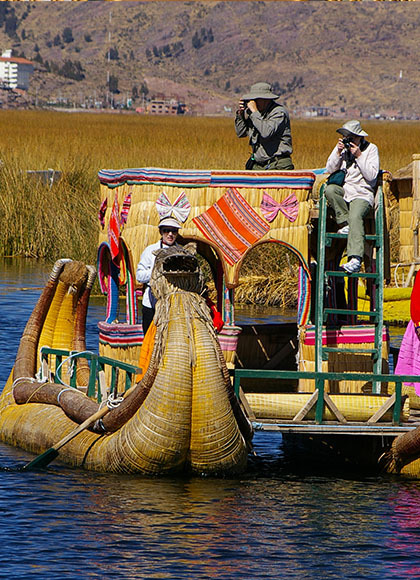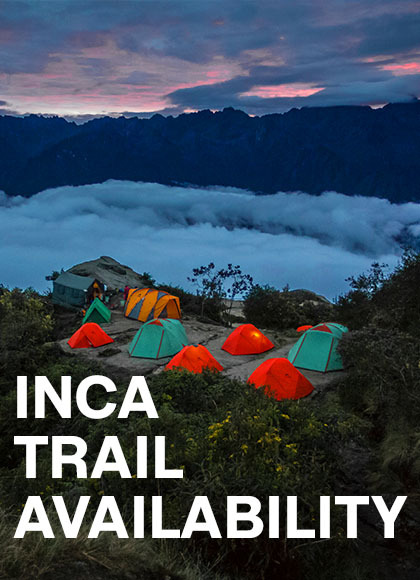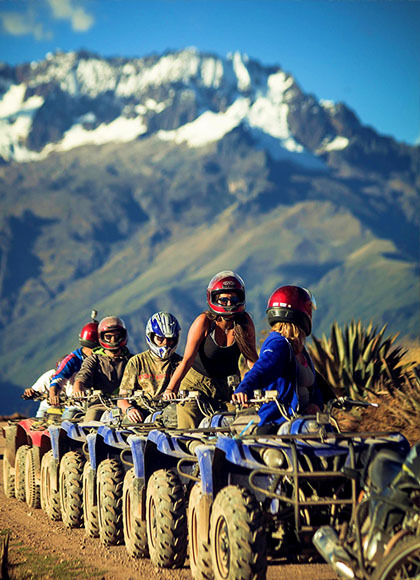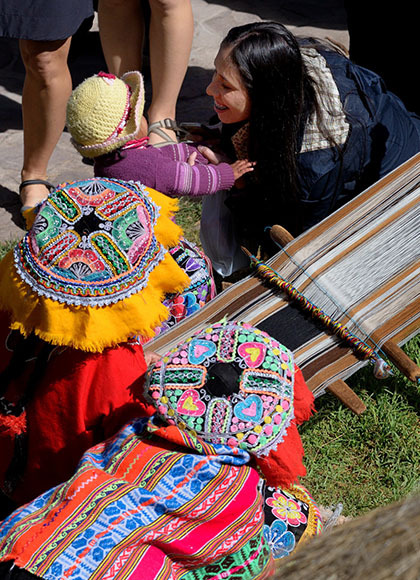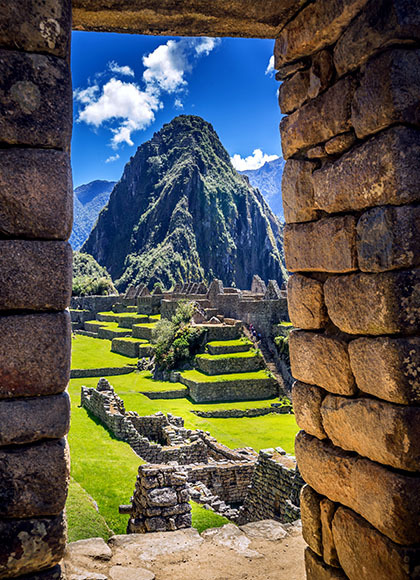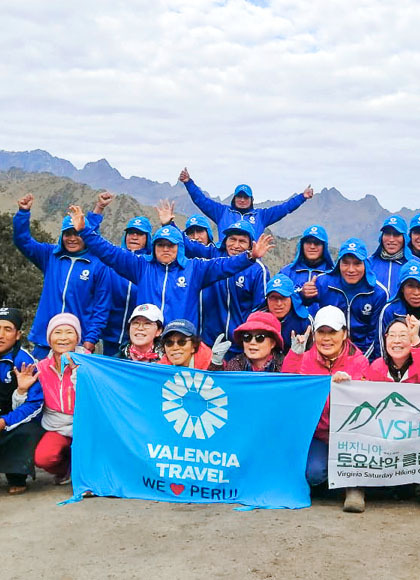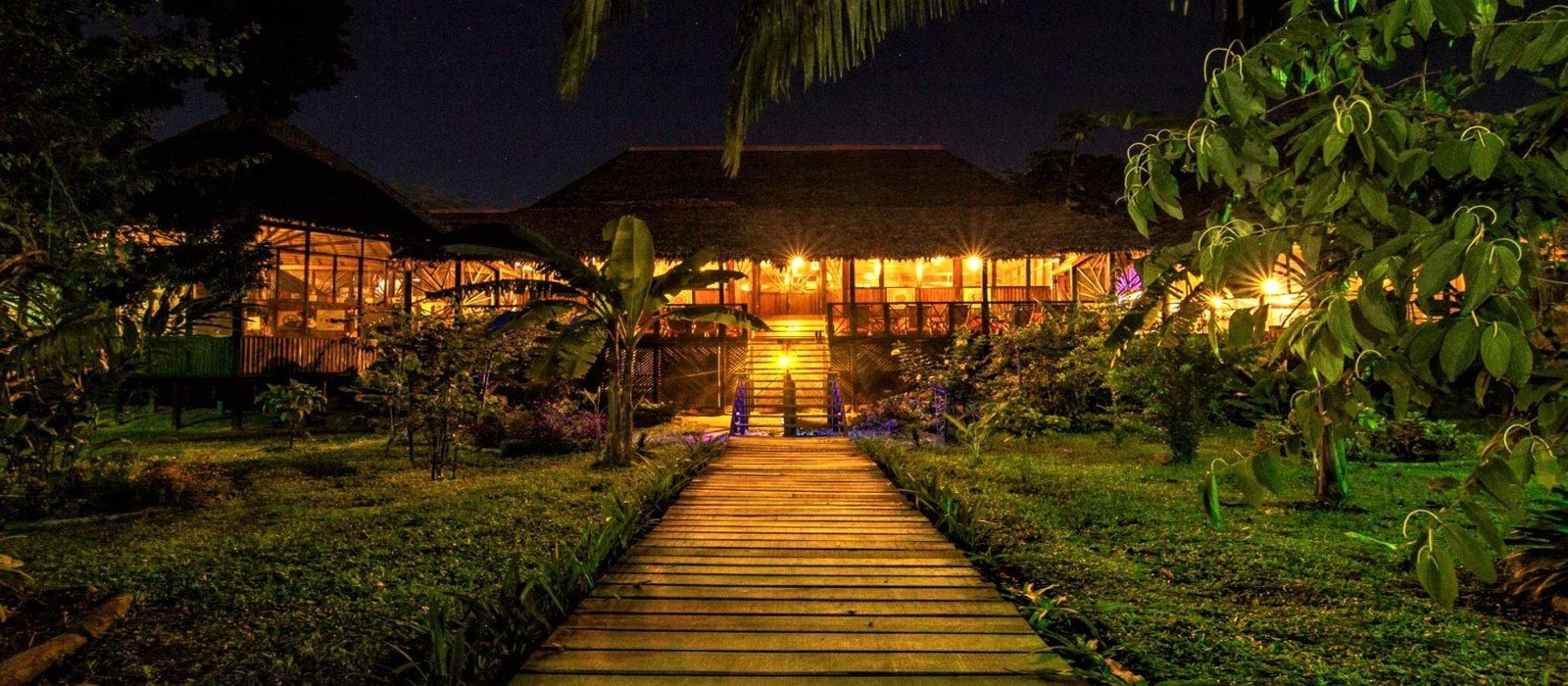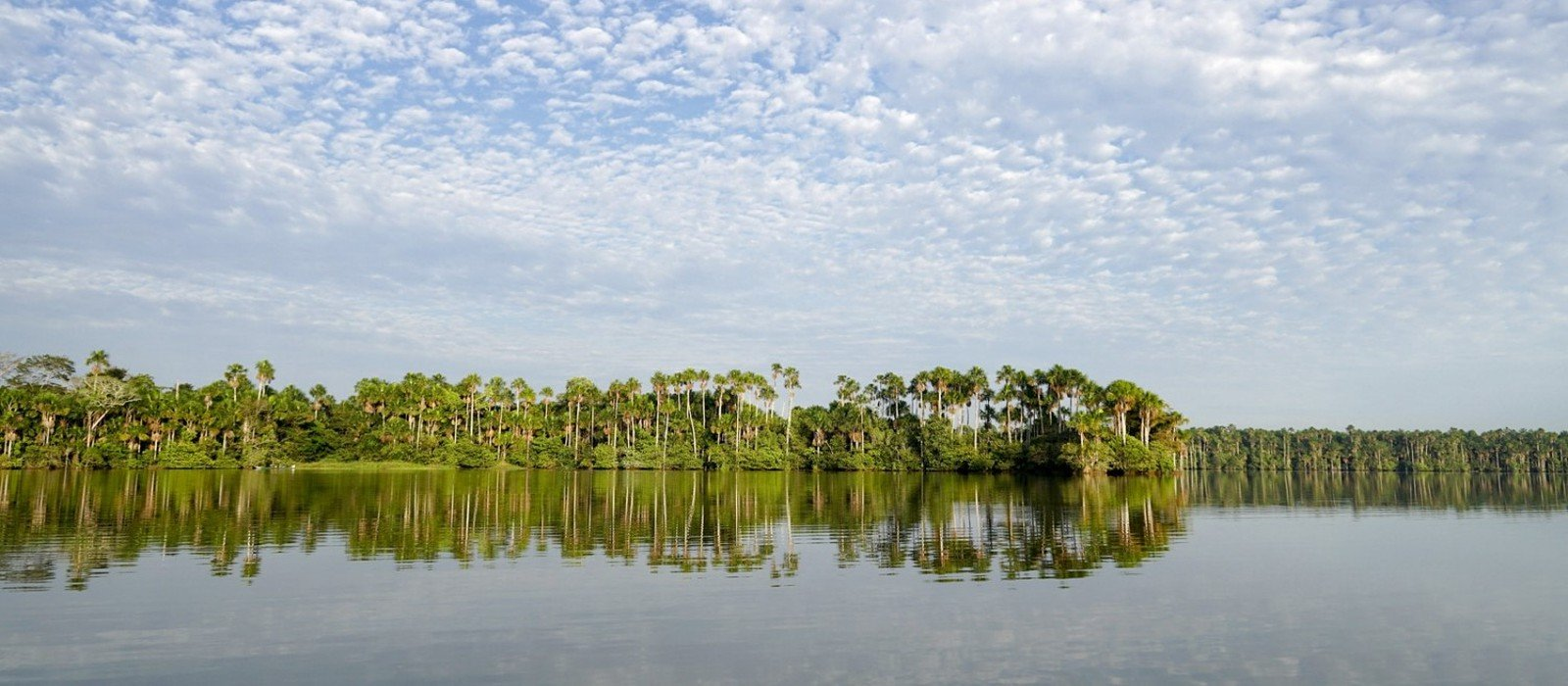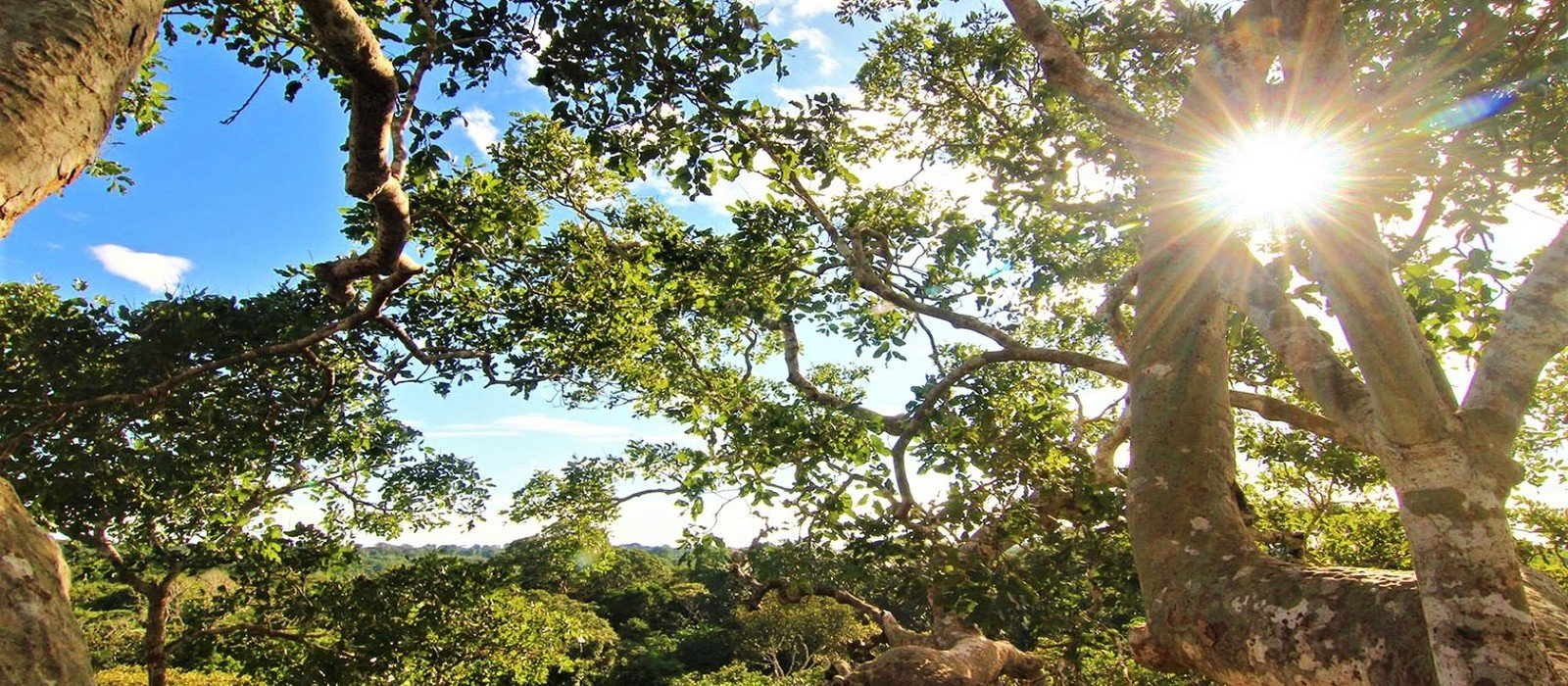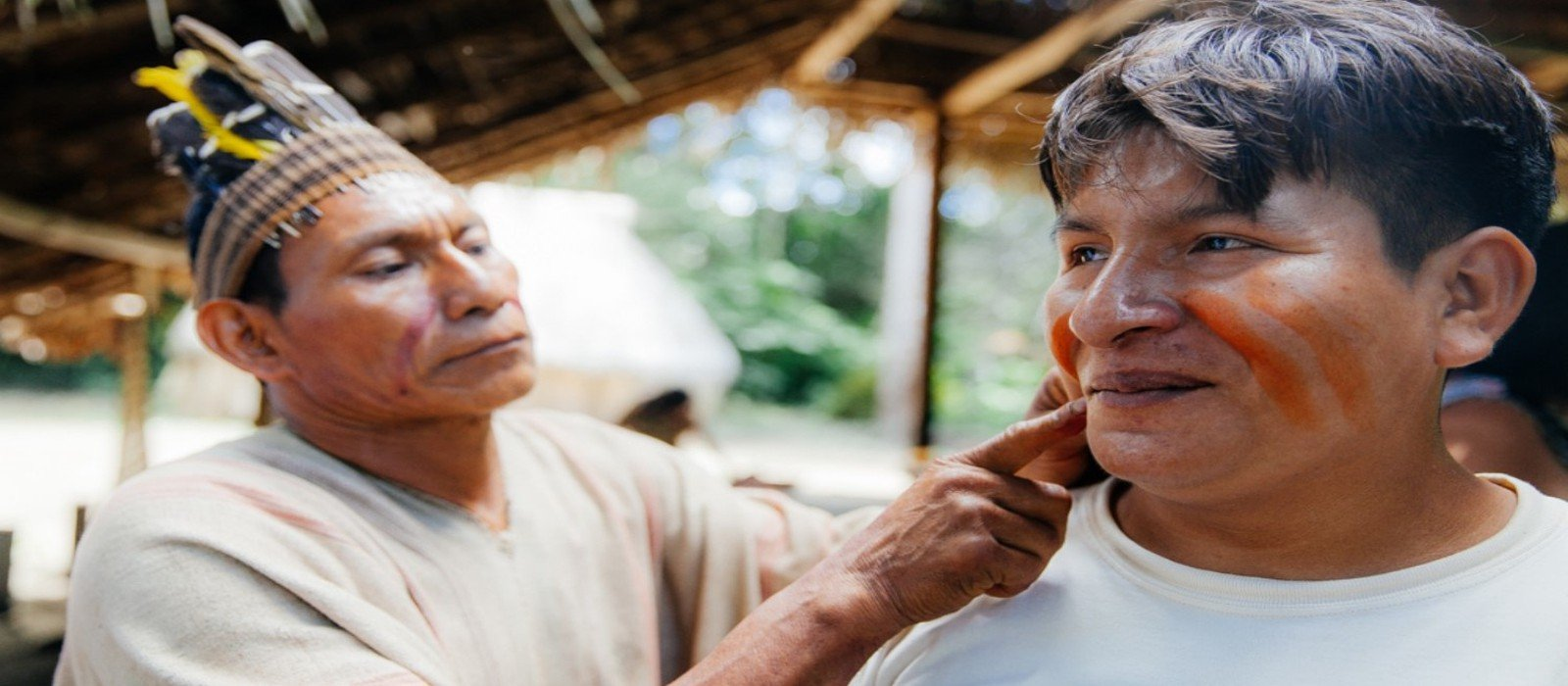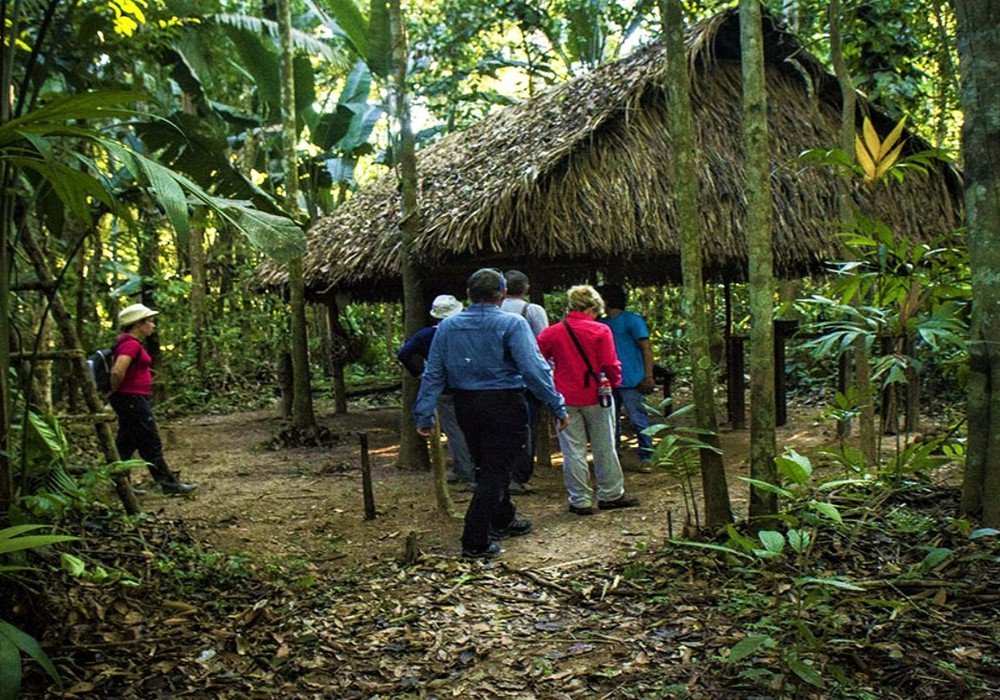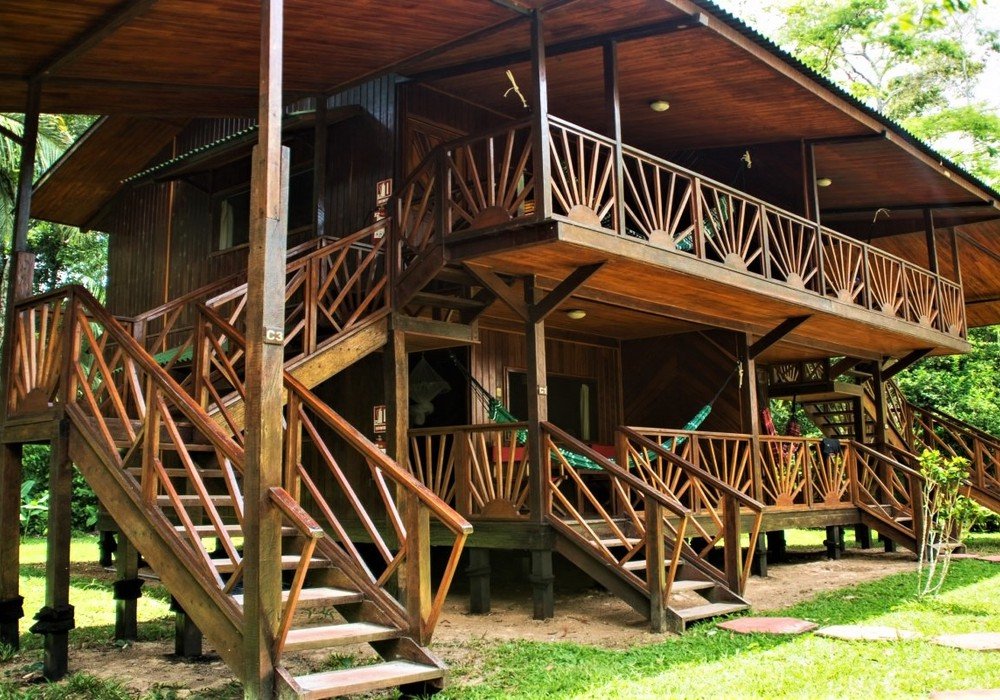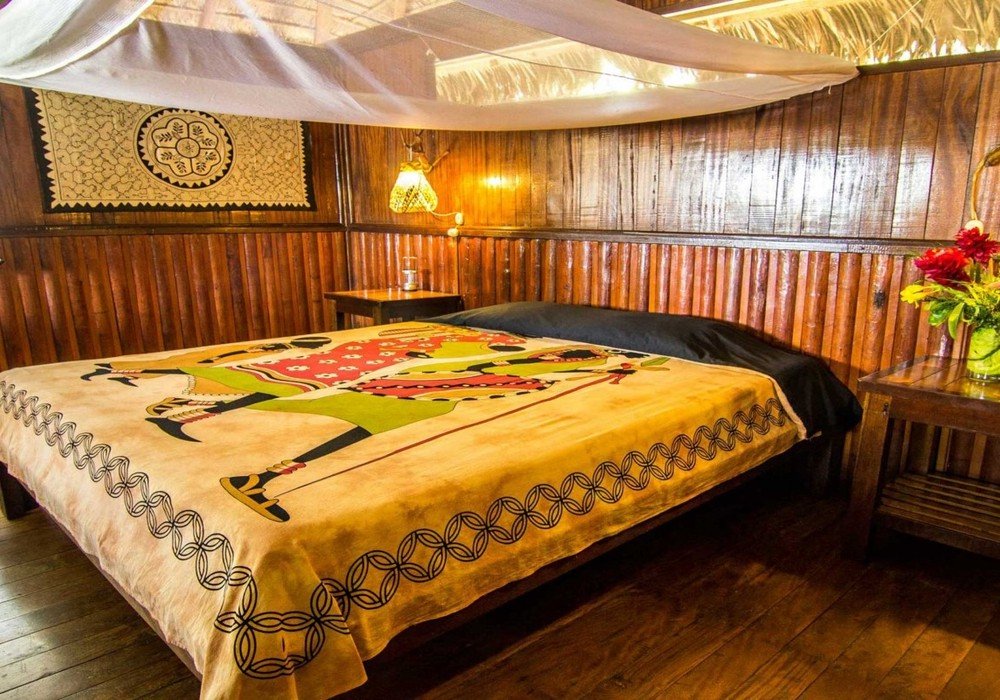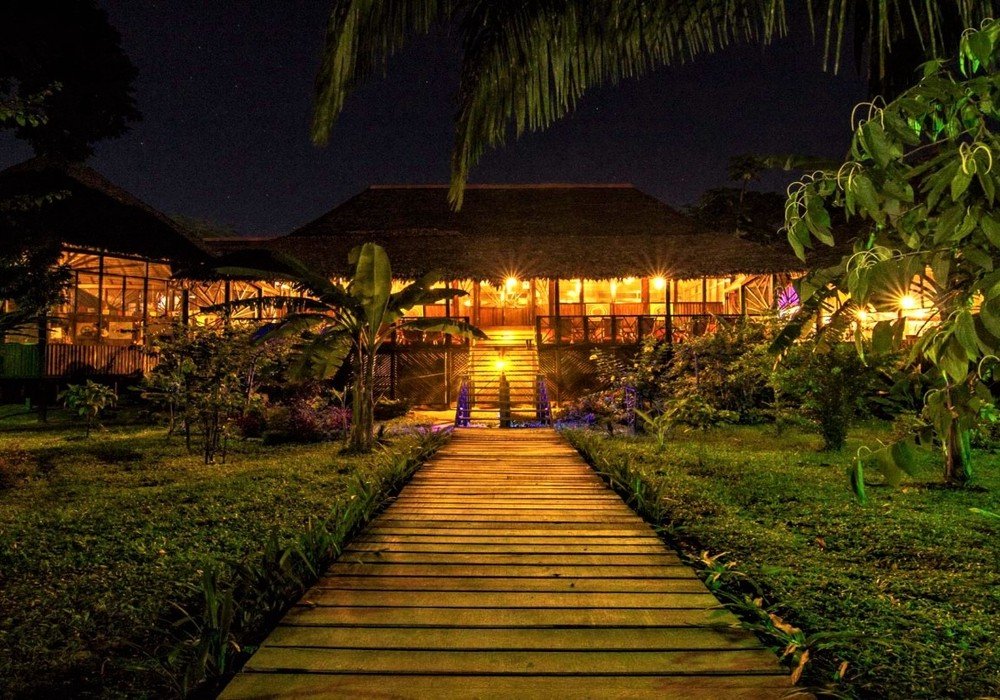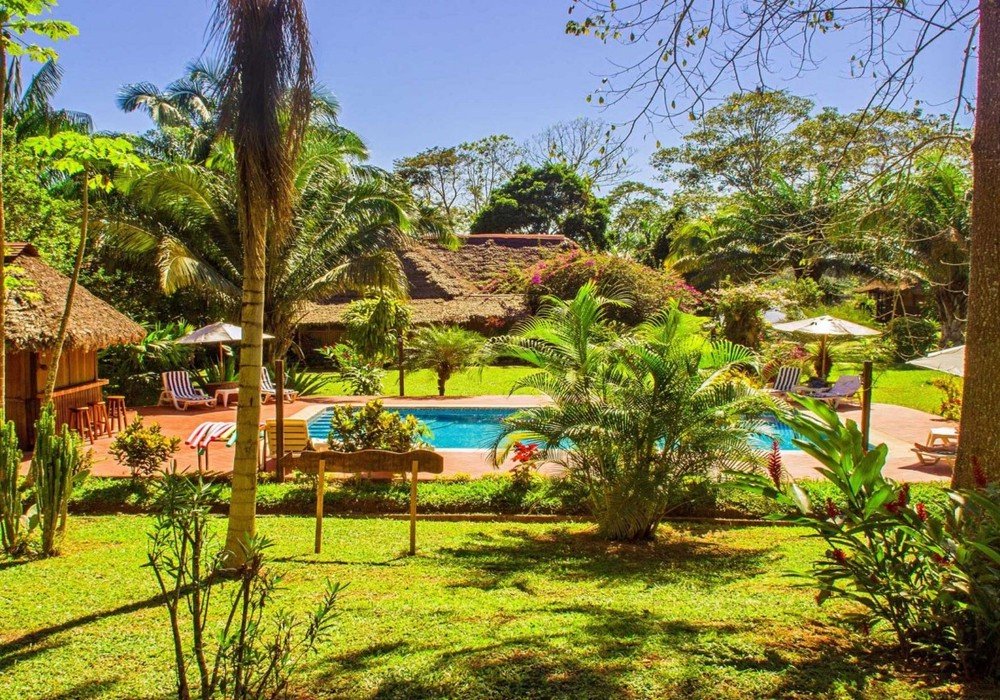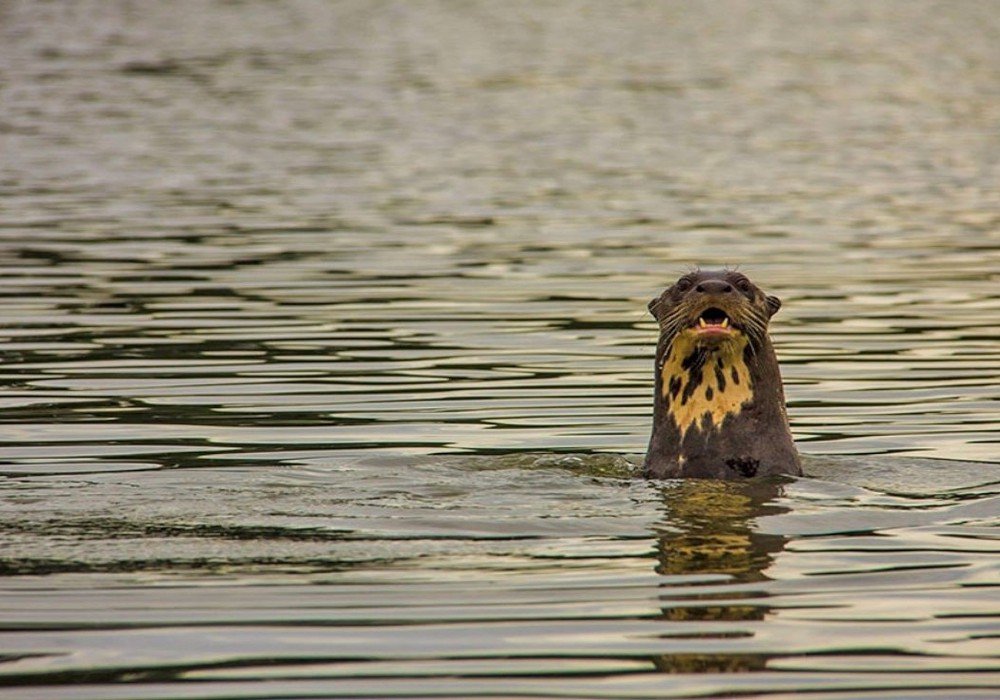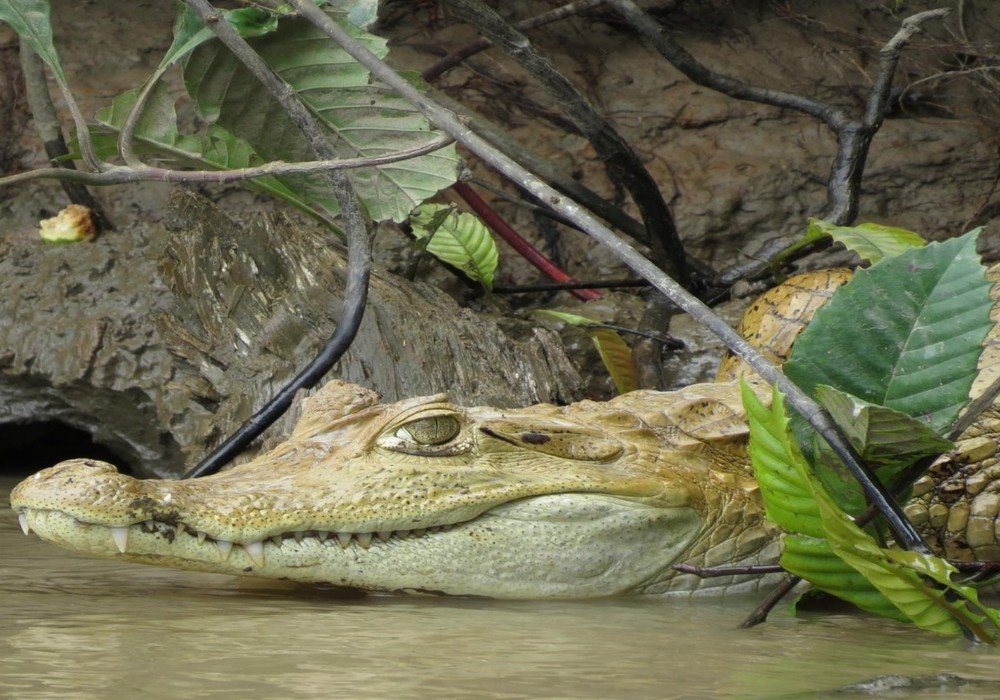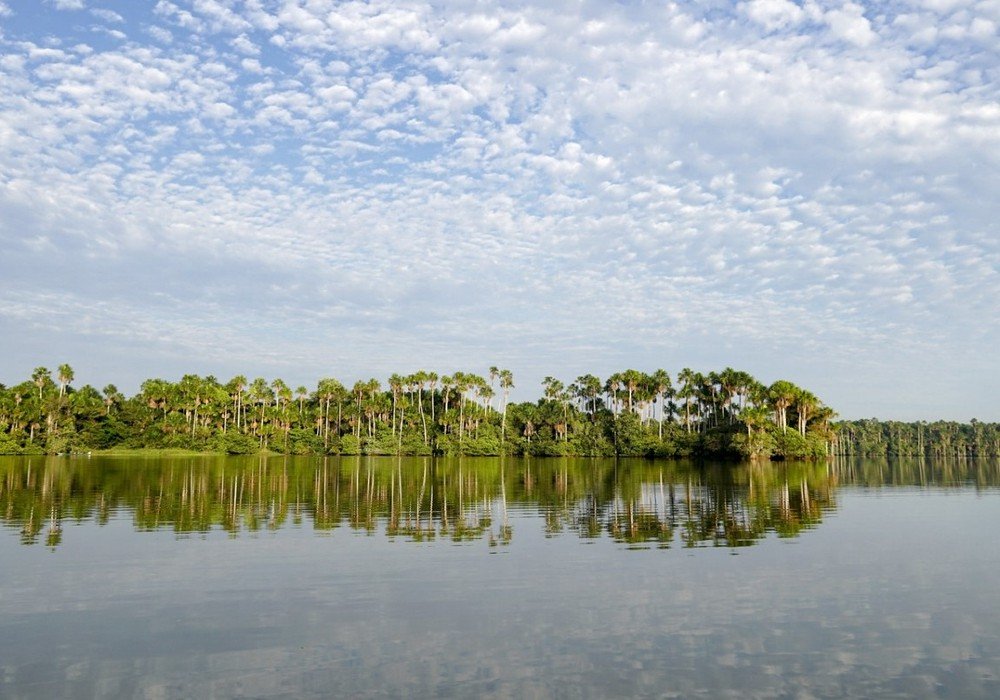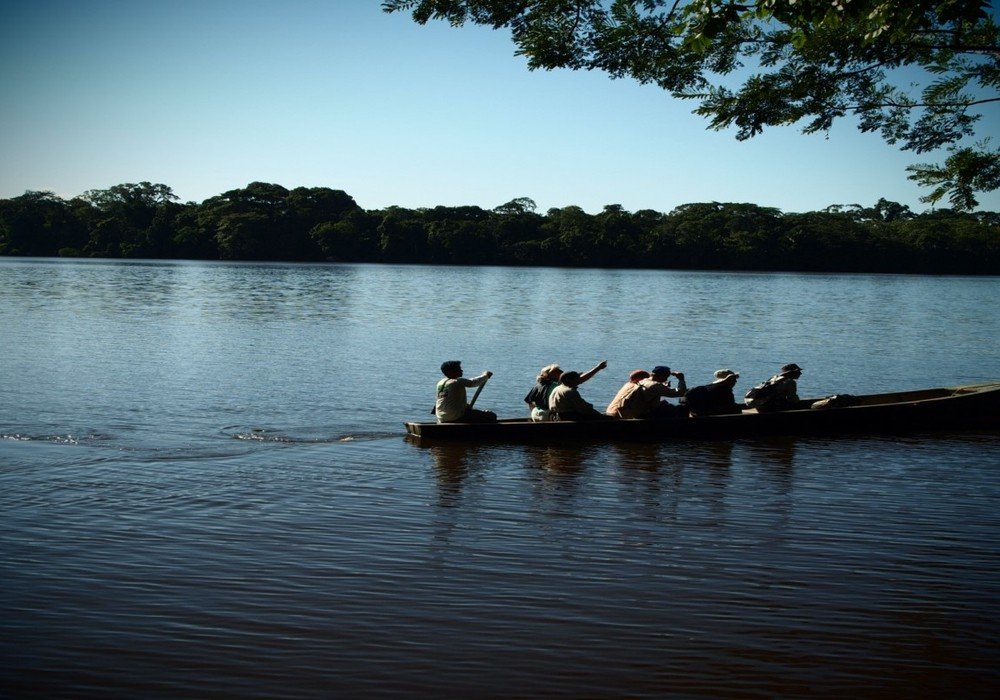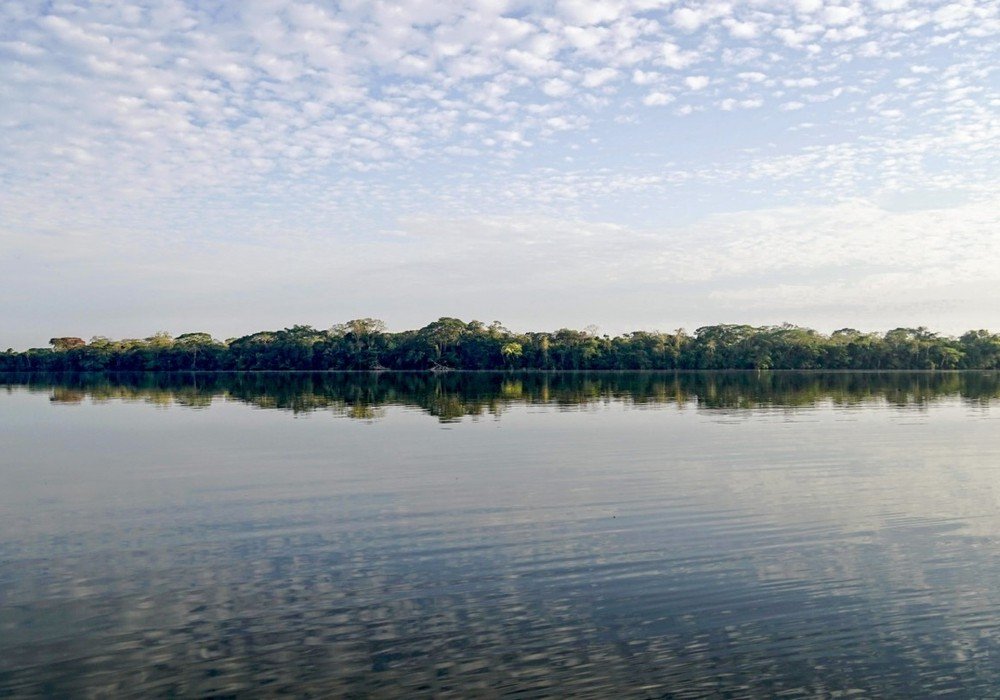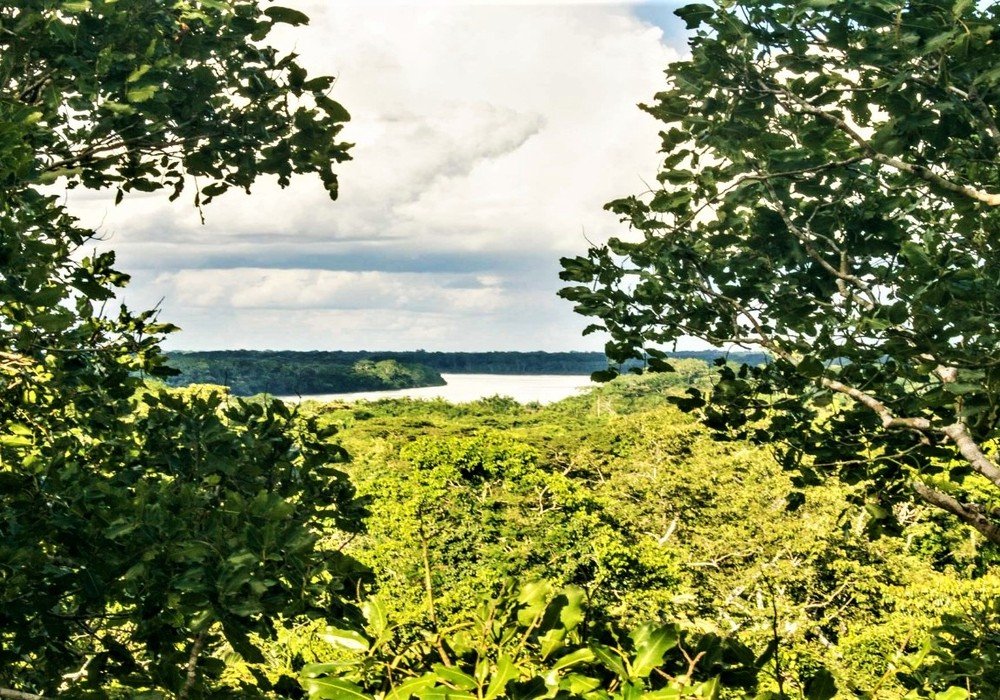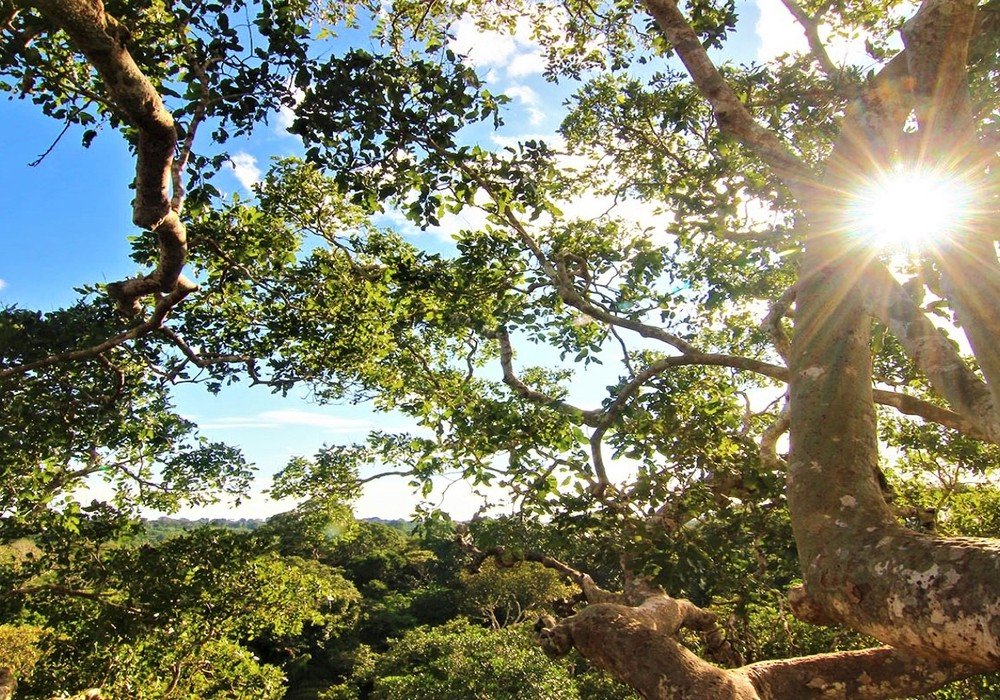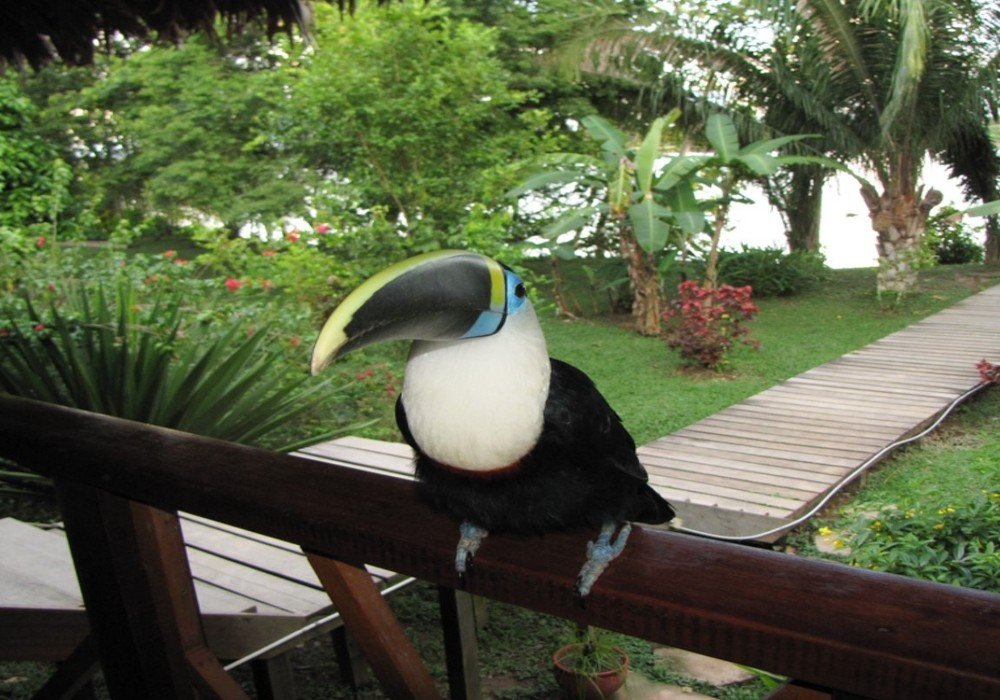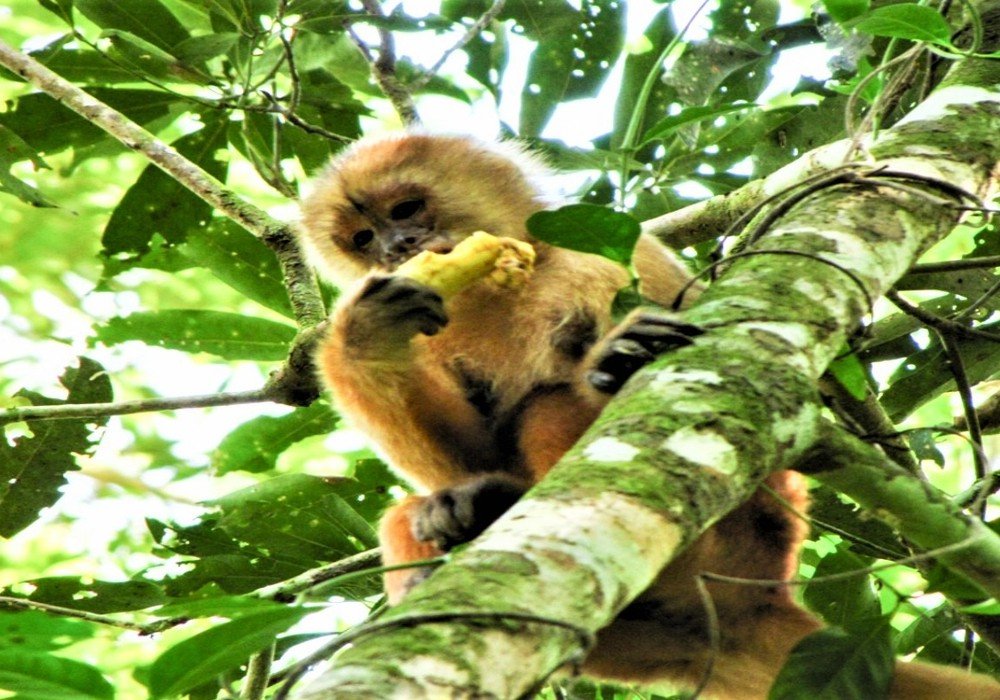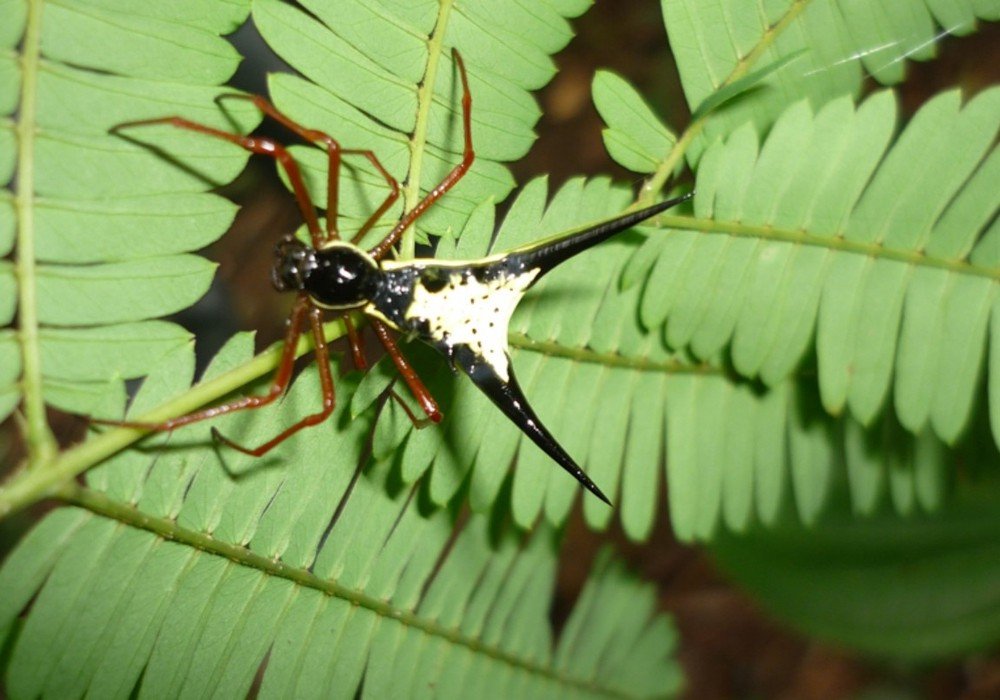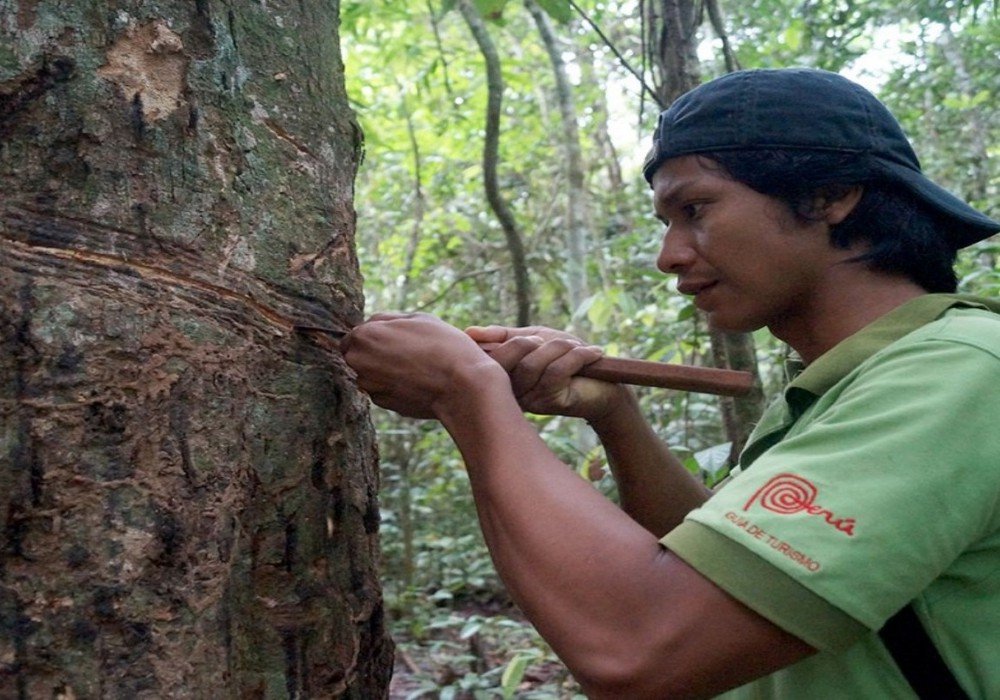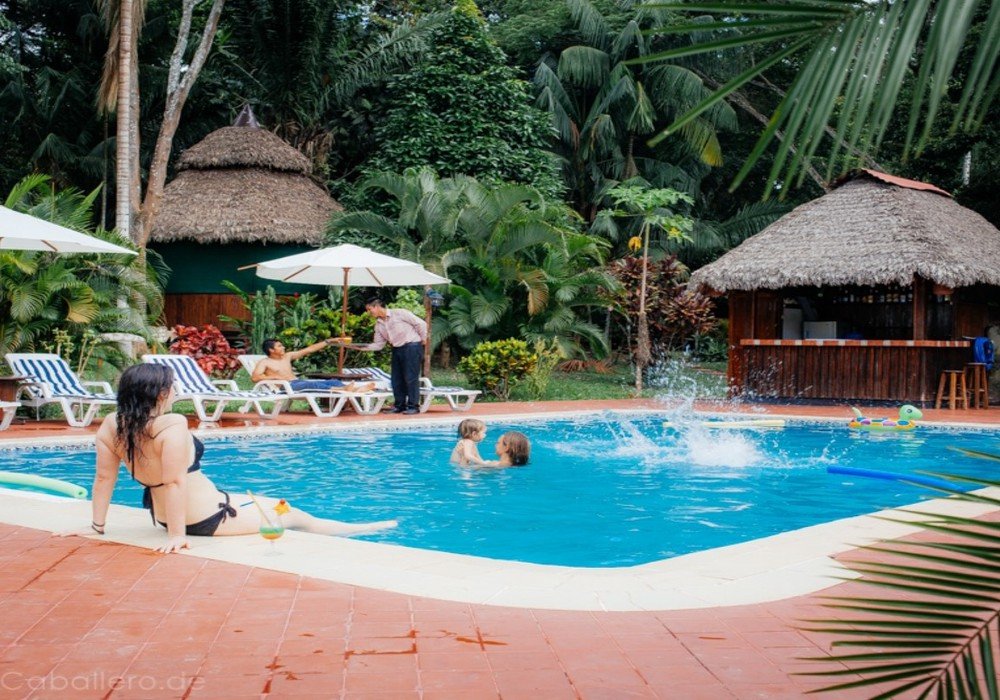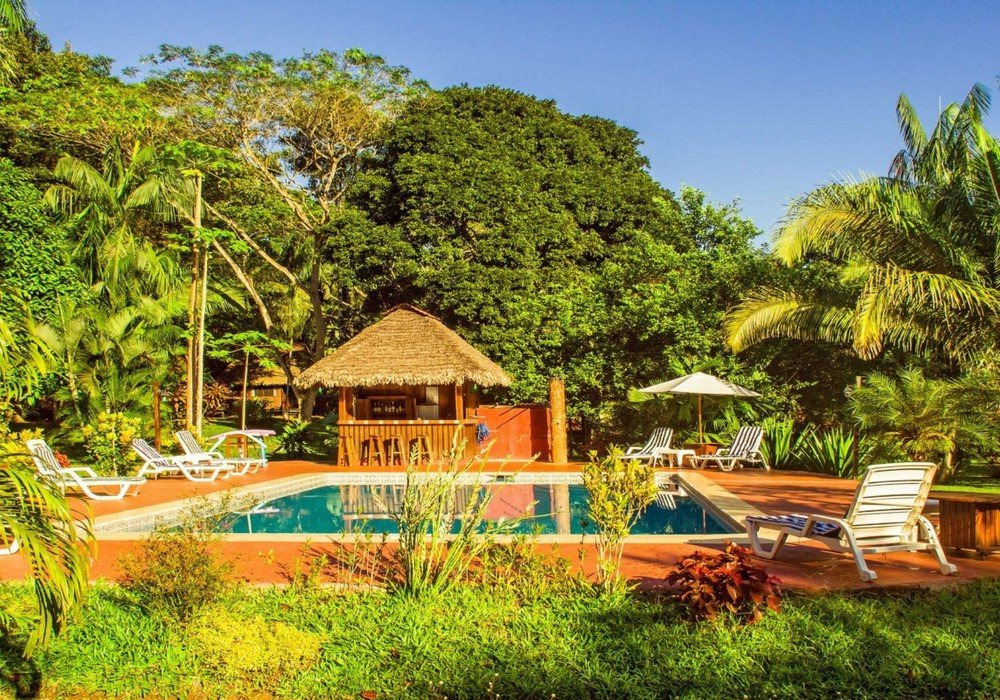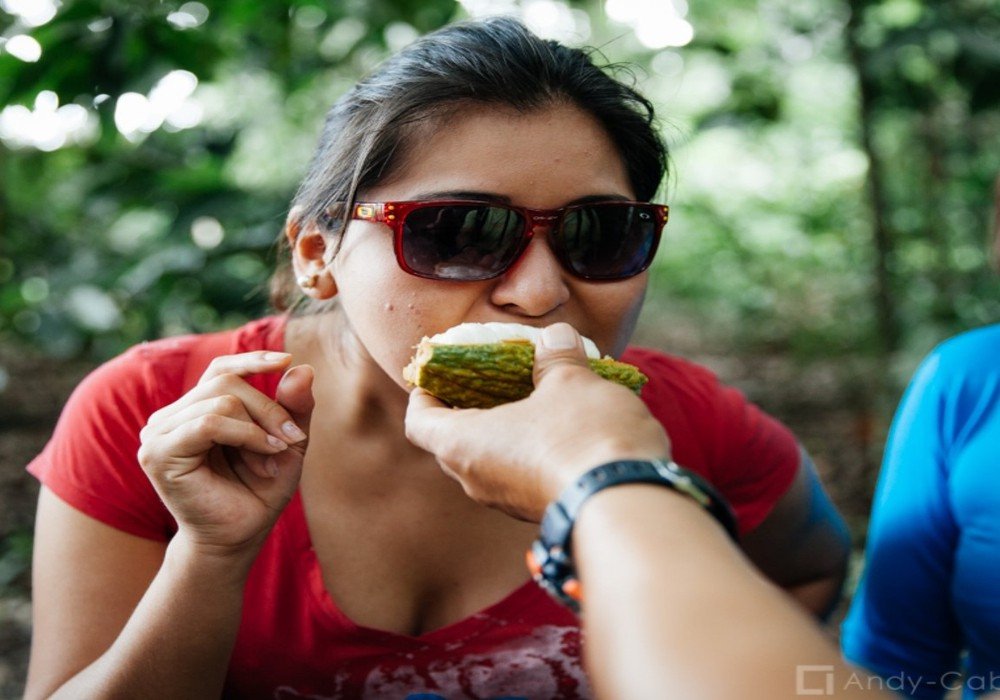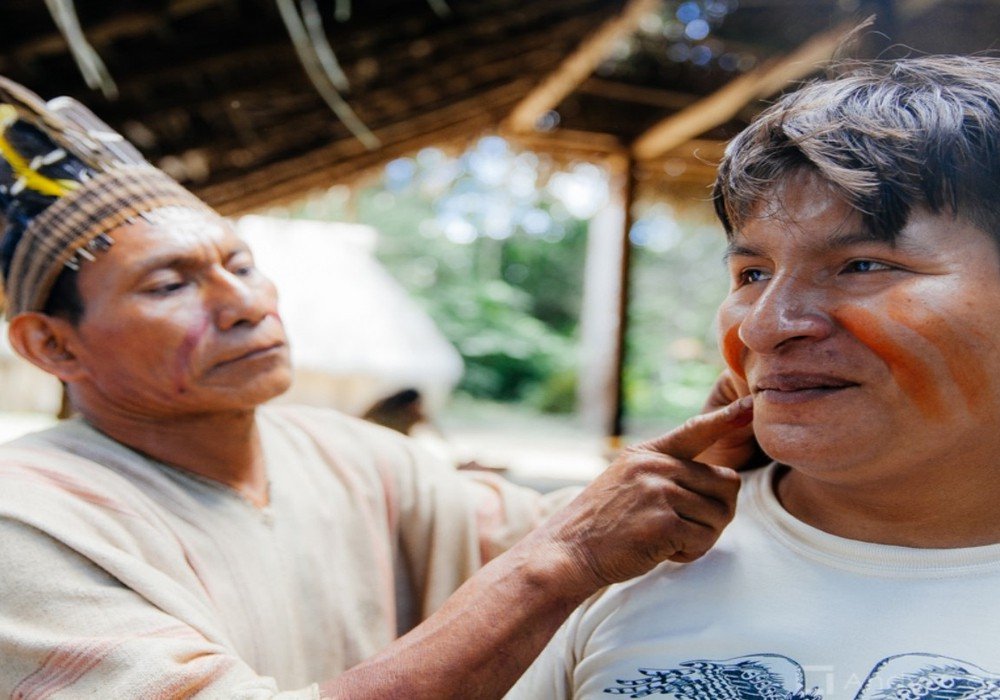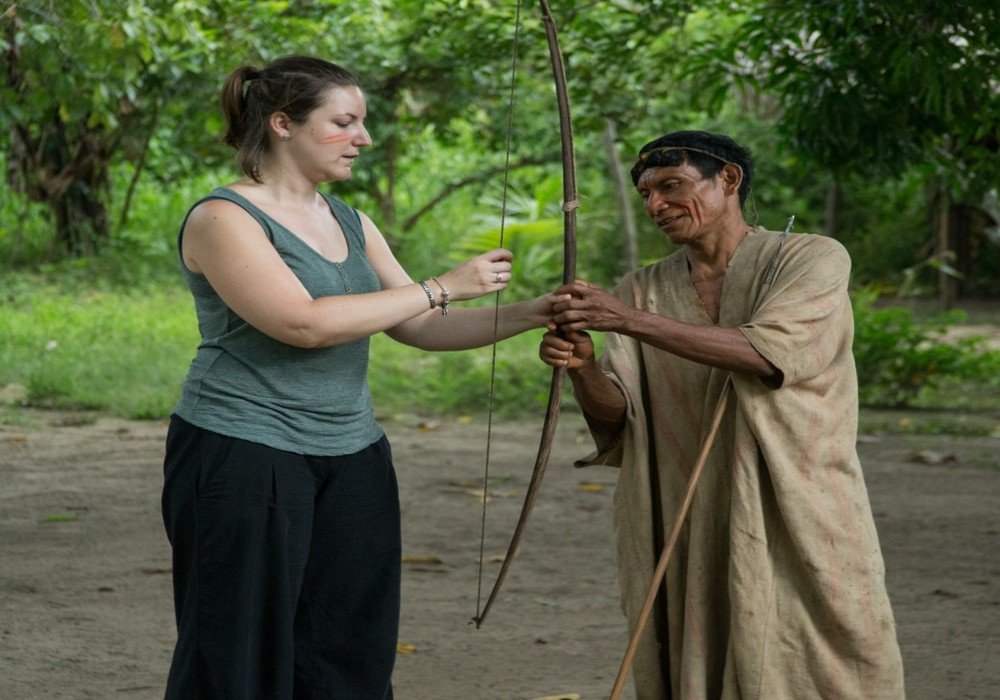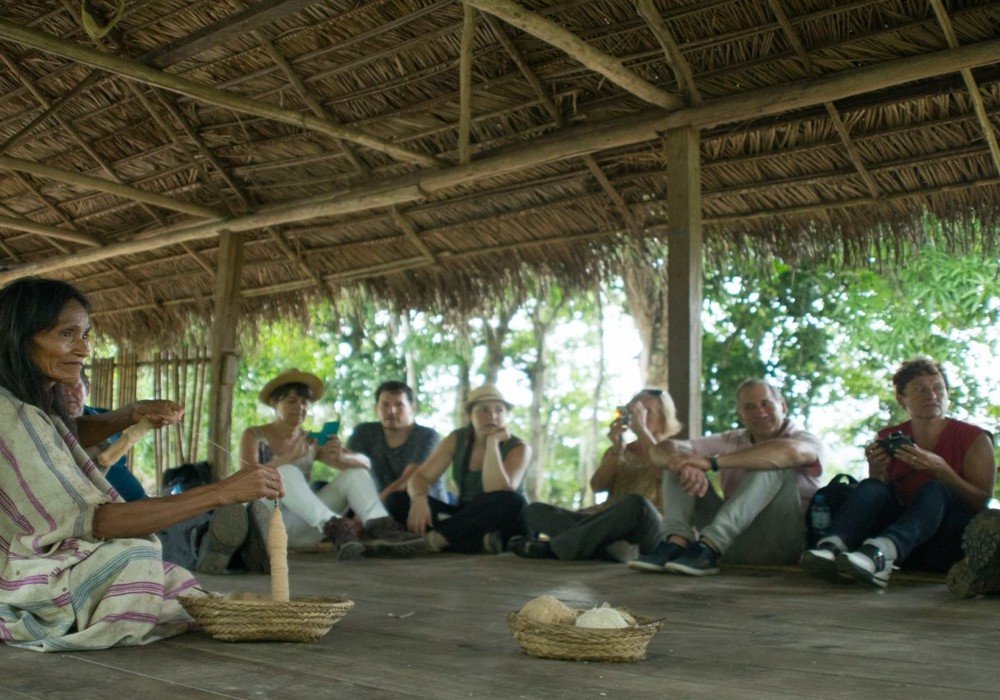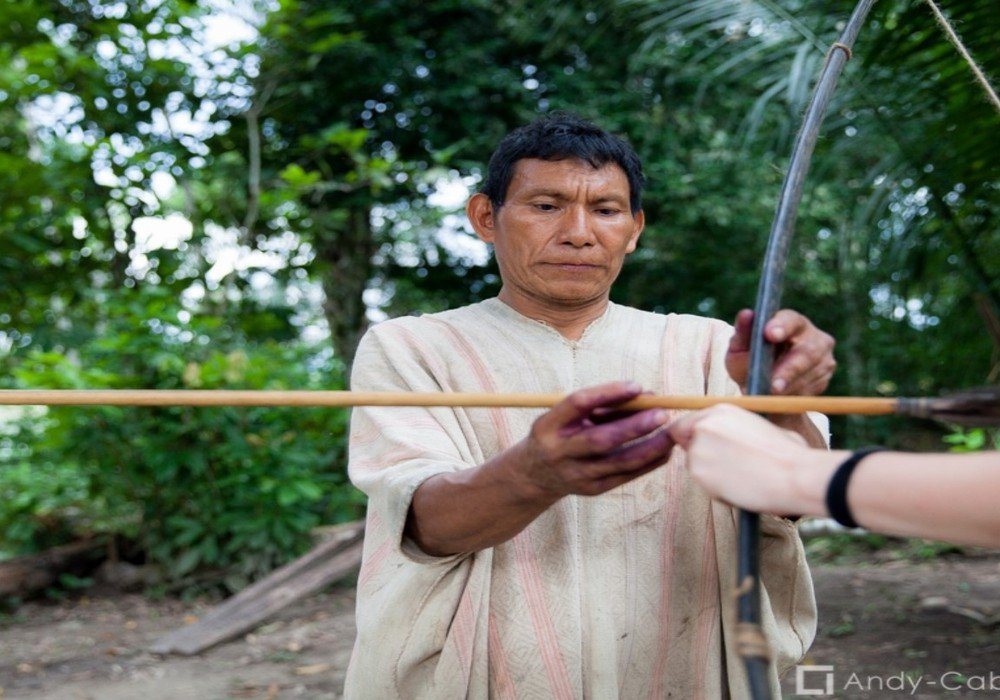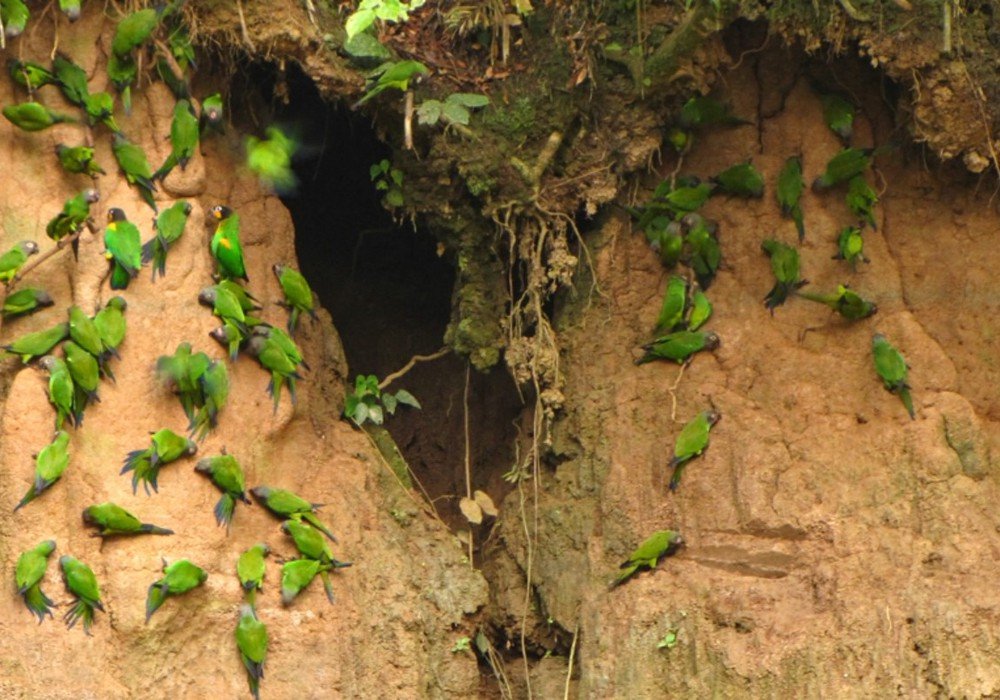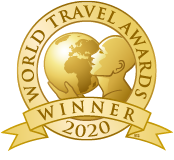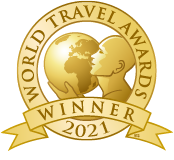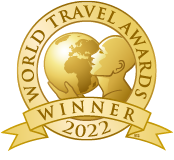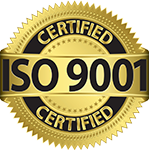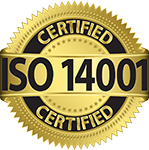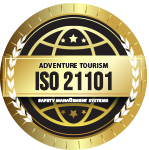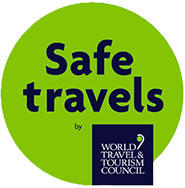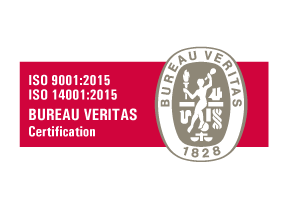Extraordinary prices for your upcoming vacation experience.
Our travel specialists are just a call away, every day of the week.
Our commitment to excellence is reflected in every positive review.
Extraordinary prices for your upcoming vacation experience.
This price is based on 2 people sharing a twin/double room. If you have more people in your group, we can give you an even better offer!
- Family-Friendly Travel
- Food and Cuisine
- Health and Well-being
- Safety and Security
- Technology and Connectivity
- Environmental Responsibility
- BoatBoat
- Entrance feeEntrance fee
- Tour GuideTour Guide
- TransportationTransportation
Trip Overview
The Corto Maltes Amazonia Lodge is a wonderful lodge located close to Puerto Maldonado and right on the doorstep of the amazing Tambopata National Reserve. The reserve is one of the most biodiverse places on Earth, with 169 mammal species, 632 bird species, more than 1,000 butterfly species and many species of amphibians, fish and reptiles found here. And with its numerous creeks, swamps and ox-bow lakes, it’s a true jungle paradise.
When you stay at the lodge, which is located on the banks of the Madre de Dios River, you’ll be within a stone’s throw of the reserve. And when you’re not exploring Tambopata, you can relax in your beautiful wooden bungalow, with its private bathroom, mosquito nets and other facilities that will make your stay in the jungle both comfortable and exhilarating.
Day by day schedule
Day 1: Trek to a Brazil Nut Harvesting Camp and Caiman Safari
Your jungle adventure begins when we pick you up from the airport or your hotel in Puerto Maldonado. We’ll then head to the Corto Maltes Amazonia Lodge office, which is located in the center of Puerto Maldonado. If you have any luggage that you won’t need during your stay in the rainforest, you can safely store it here.
We will then start our short boat trip to the lodge, traveling on the riverboat Puerto de Capitanía. It takes about 40 minutes as we cruise ...
Meals: Lunch, Dinner
Day 2: Sandoval Lake, Lookout Tower and the Shiringuero Camp
Today we’ll wake up early, at around 5:30 a.m., and have tea or coffee before setting off to the famous Lake Sandoval (we’ll prepare a packed breakfast and snack for you to take on the excursion).
After roughly 20 minutes of travel on the river Madre de Dios, we’ll arrive at the landing stage of Lake Sandoval. Then we’ll set off on a 3 km hike through the jungle, heading into the Tambopata National Reserve. Here we’ll see giant trees, snakes...
Meals: All Included
Day 3: Chacra and Native Machiguenga Family Meals: All Included
After breakfast we’ll take a 20-minute boat trip downriver to a typical chacra, or farm, owned by a local family. Here we can see and taste different seasonal tropical fruits as well as other native products such as cacao, banana, cocona, breadfruit, noni, yucca, lime and more. The farm belongs to a traditional rural family, who, like many farmers in the region, sell their products in the main markets of Puerto Maldonado.
After spending some time at the farm, we&rs...
Meals: All Included
Day 4: Clay Lick and Trip to a Local Market
Today we’ll wake up at dawn for a trip to a clay lick, which are particularly famous in this part of the Amazon. Due to the great location of the lodge, we only have to walk for 20 minutes to reach the clay lick, where we can watch three to five different types of parrots. They come to the clay lick to ingest a particular kind of clay, only found in certain areas of this region, which is vital for the metabolic regulation of these colorful birds.
We’ll return...
Meals: Breakfast
Our Travelers REVIEWS
At Valencia Travel, our mission is to craft unforgettable Peru vacation packages and machu Picchu tours that resonate long after they're over. Our secret? Listening to the stories shared by our travelers during their Peru tour packages. Through their five-star reviews, you'll uncover genuine experiences, from transformative holiday adventures across the majestic landscapes of Cusco to heartwarming connections with local communities on Cusco highland excursions. Each story is a reflection of our commitment to excellence and personalized care, inviting you to see the world through the eyes of those who have journeyed with us on their Peru tour trip. Join us in celebrating the moments that make Valencia Travel a top-rated choice for explorers on their Peru adventure tours from all around the globe.

Contact our travel specialist
Diego Melendez
“Let me share with you my knowledge and passion for travelling , helping you to plan the best holidays of your life!”
Contact UsDates & Prices
Kickstart your Valencia Travel Peru vacation package by selecting your preferred month of travel in our Dates & Prices section. Here, you'll find all you need to know about our trekking tour package availability and pricing, tailored to fit every season and budget. Navigate through your options to discover the ideal time for your unforgettable tour trip. With just a few clicks, you're on your way to experiencing the beauty and thrill of our Peru adventure packages, or Machu Picchu tour packages, specially curated to your preferences.
Start your Valencia Travel tour package by picking the perfect date through our straightforward availability module. Choose your optimum timeframe to discover your preferred travel options and preferred dates for your Andean adventure of a lifetime. If the listed dates don't align with your plans, don't worry. Reach out to us, and we'll explore alternative dates or Peru trekking options tailored just for you. Our goal is to ensure your travel experience is exactly what you've envisioned and your Machu Picchu tour is perfect. Your dream vacation adventure is just a selection away. We're here to guide you through.
Secure your spot on the Inca Trail now with our real-time availability information.
Act quickly—these spots sell out fast!
Inclusions
Discover exactly what your Valencia Travel Peru vacation package offers. Our Inclusions section highlights everything include in the cost, from accommodations and guided tours to special experiences, ensuring a comprehensive and enriching Peru tour package. In the Exclusions section, we clarify what's not included, like certain personal expenses and optional adventure activities, to help you plan perfectly and customize your Peru trip as desired. Review these sections for a clear understanding of your Peru tour package's value and structure. Any Questions? Our team is ready to assist, ensuring your Peru travel adventures meet your expectations every step of the way.
What's included
- Accommodation: Corto Maltes Amazonia Lodge (3 nights)
- Transport: Private or share
- Your Journeys Highlight Moment: Amazon in Puerto Maldonado
- Meals: 3 breakfast, 2 lunches, 3 dinners
- Excursions according Program
- 24/7 support and emergency line available throughout the itinerary.
What's not included
- Minimum medical and emergency evacuation insurance
- Trip cancellation insurance or any other travel insurance
- Any activity not described in what's Included
- Meals and drinks are not specifying on the itinerary
- Gratuities
- Travel insurance
Additional Information
Dive into our Additional Information section for key insights and answers before your Machu Picchu tour package with Valencia Travel begins. Here's what you'll find:
- Meeting Times: Essential start details for your Peru adventure packages.
- FAQs: Quick answers to your Peru travel questions.
- Destination Insights: Everything you need to know about your travel destination.
This resource hub is designed to ensure you're well-prepared and excited for what lies ahead. Need more Peru info? We're just a message away.
The Top Kid Friendly Activities in Peru:
Peru offers a wide range of kid-friendly activities that can make your family trip both fun and educational. Here are some top options:
- Machu Picchu: While the hike itself might not be suitable for very young kids, a visit to Machu Picchu is a great way to introduce children to history and culture. They'll be amazed by the ancient ruins and stunning scenery.
- Cusco: The city of Cusco is filled with history and culture. Visit the Plaza de Armas, explore Inca ruins, and enjoy the local markets. Kids can learn about Inca history and see the fusion of Inca and Spanish architecture.
- Sacred Valley: Explore the Sacred Valley of the Incas. Visit Pisac and Ollantaytambo to see more ruins and experience local culture. The wide-open spaces are perfect for kids to run around and explore.
- Nazca Lines: Older kids with an interest in history and mysteries might enjoy a flight over the Nazca Lines. These massive geoglyphs in the desert are a fascinating sight.
- Amazon Rainforest: A family adventure in the Amazon jungle can be incredibly educational and fun. Kids can see unique wildlife, learn about the rainforest ecosystem, and experience boat rides and jungle walks.
- Arequipa: The Santa Catalina Monastery in Arequipa is like a mini city within the city. Kids can explore its narrow streets, colorful buildings, and historical rooms.
- Ballestas Islands: Take a boat tour to the Ballestas Islands to see penguins, sea lions, and a variety of bird species. It's like a mini Galapagos experience.
- Beaches: Peru has some beautiful beaches. Mancora, for example, is a family-friendly destination with warm waters and plenty of activities like swimming, surfing, and sandcastle building.
- Local Markets: Visiting local markets can be a cultural experience for kids. They can see traditional Peruvian products, taste local foods, and engage with locals.
- Chocolate Making: Peru is known for its delicious chocolate. Consider taking a chocolate-making workshop where kids can learn about the process and make their own treats.
- Inca Textile Workshops: In Cusco and the Sacred Valley, you can find textile workshops where kids can learn about traditional Inca weaving techniques and even create their own textiles.
- Parque de la Reserva (Magic Water Circuit): In Lima, this park features a series of fountains with colorful lights and music. It's a mesmerizing and entertaining experience for kids of all ages.
- Cusco Planetarium: A visit to the planetarium in Cusco can be an educational and interactive experience for kids, where they can learn about Inca astronomy and the night sky.
- Peruvian Cuisine: Let your children explore Peruvian cuisine. Encourage them to try ceviche, empanadas, and other local dishes. Many Peruvian restaurants are family-friendly.
Remember to adapt your activities to your children's ages and interests to ensure a memorable and enjoyable experience in Peru.
The Best Kid-friendly Hotels and Child care Options in Peru
Peru offers many family-friendly hotels and child care options to make your trip enjoyable and stress-free. Here are some recommendations for kid-friendly hotels and child care options in Peru.
Kid-Friendly Hotels:
- Inkaterra Machu Picchu Pueblo Hotel (Aguas Calientes, Machu Picchu)
This eco-friendly resort in the heart of the cloud forest is a great option for families. They offer various child-friendly activities and have spacious rooms and beautiful gardens. - Belmond Miraflores Park (Lima)
This luxury hotel offers family suites and amenities such as a pool and children's menu at their restaurant. It's conveniently located in the Miraflores district. - Sumaq Machu Picchu Hotel (Aguas Calientes, Machu Picchu)
This hotel offers family-oriented amenities and is located just a short walk from the Machu Picchu Sanctuary. They have a children's program that includes art and cooking classes. - Palacio del Inka, a Luxury Collection Hotel (Cusco)
A beautiful hotel in Cusco, offering family suites and proximity to the city's historic attractions. - Explora Valle Sagrado (Sacred Valley)
This all-inclusive resort offers family-friendly activities and excursions in the Sacred Valley, allowing kids to explore the region.
Child Care and Babysitting Services:
- Ask the Hotel:
Many hotels can arrange for babysitting services. Inquire with your hotel about their childcare offerings. They often have trusted local caregivers. - Local Babysitting Agencies:
In major cities like Lima and Cusco, you can find babysitting agencies that can provide reliable child care services. Examples include "Nanas y Amas de Casa" or "Bebeviajes." - Check Reviews:
Before choosing a babysitter or childcare service, read reviews and ask for recommendations from other travelers. Safety should be a top priority. - Online Services:
You can use online platforms like Babysits or Care.com to find local caregivers. Ensure you thoroughly vet and check references when hiring independently.
Remember that it's essential to take necessary precautions and thoroughly vet any child care providers. Ensure that they are experienced, trustworthy, and capable of communicating in a language you are comfortable with.
Additionally, when traveling with children in Peru, consider exploring family-friendly attractions like the Larco Museum in Lima, visiting the Pisac Market in the Sacred Valley, or taking a boat trip on Lake Titicaca. These destinations offer fun and educational experiences for kids.
The best Family Restaurants in Peru
Peru offers a rich culinary tradition, and there are many family-friendly restaurants where you can enjoy delicious Peruvian cuisine. Here are some of the best family restaurants in Peru:
- Panchita (Lima): Panchita is a popular family restaurant in Lima, known for its delicious Peruvian dishes, particularly grilled meats, and traditional side dishes. The atmosphere is welcoming, making it a great choice for families.
- La Lucha Sangucheria (Lima): La Lucha is famous for its mouthwatering sandwiches, including the classic Peruvian sandwich, "Butifarra." The casual and friendly ambiance is suitable for families with kids.
- Canta Rana (Lima): Located in the Barranco district, Canta Rana is a beachside restaurant with a relaxed atmosphere. They serve a variety of seafood dishes and have a kids' menu, making it a great choice for families.
- Pardo's Chicken (Various Locations): Pardo's Chicken is a Peruvian chain known for its delicious rotisserie chicken and a wide range of side dishes. It's a family-friendly spot with options for children.
- Tanta (Various Locations): Tanta is a popular chain of Peruvian restaurants owned by renowned chef Gastón Acurio. They offer a diverse menu with a mix of traditional and fusion dishes, making it a great choice for families seeking variety.
- El Mercado (Lima): El Mercado is a trendy but family-friendly restaurant in Lima, serving a mix of traditional and contemporary Peruvian cuisine. They offer a welcoming environment and a kids' menu.
- Papachos (Lima and Cusco): Papachos is a burger joint in Lima owned by celebrity chef Gastón Acurio. It's a great place for families looking for a taste of Peruvian-inspired burgers and casual dining.
- Jack's Café (Cusco): Jack's Café is a popular breakfast and brunch spot in Cusco. It's a cozy and family-friendly place, known for its delicious breakfast items, sandwiches, and smoothies.
- Sumaqcha (Cusco): Sumaqcha is a restaurant located near the San Pedro Market in Cusco. It serves authentic Peruvian food in a friendly, local atmosphere, making it a great option for families looking for an immersive experience.
- Cucharitas (Cusco): Cucharitas is an ice cream specialty restaurant with an excellent selection of dishes for parents and children .....the perfect family option!.
The Top Traditional Dishes to try in Peru
Peruvian food is a cuisine of contrast, robust yet delicate, acidic with sweet or starchy and hot and cold on the same plate. Traditional Peruvian food relies on different herbs and spices, producing bold flavors, ranging from the crisp and refreshing to the deep and hearty, combining opposites in a blend of culinary genius. While many people visit Peru to experience Machu Picchu and unparalleled trekking, Peru’s true treasure is its rich culinary heritage. Rich ingredients from the coast, the Andes and The Amazon combine with culinary techniques from Africa, Europe, and East Asia come together to produce unique taste sensations, giving Peru the title of the culinary capital of South America. Peru’s gastronomic boom began, reinventing dishes that had a long tradition in the kitchens of Peruvian families. Here is a list of top traditional Peruvian dishes to sample on your visit to Peru.
- Ceviche.- Let’s begin with the national dish of the country. Ceviche can be described as addictive and there are not many Peruvians who don’t class this Peruvian dish as one of their favorites. Other South American countries have their own versions of the dish, but this marinated fish or seafood, served cold, includes the catch of the day, marinated for a few minutes in lime juice, onion, salt, and hot chilies (aji) in Peruvian cuisine. Preparing a ceviche is an art that Peruvians like to experiment with to make other dishes like quinoa ceviche and even a mango ceviche for vegetarians!.
- Lomo Saltado.- There’s nothing more Peruvian than lomo saltado. As a country that is home to diverse cultures, the birth of this dish could only have been possible because of cultural influences in the kitchen. Lomo Saltado is originally a Chinese dish brought by Chinese immigrants. Combine sliced steak, marinated in soy sauce, red onions, french fries, ají amarillo or chili and you have the basic recipe, then serve with rice. Coming in second only to ceviche in popularity, lomo saltado is a mix of Chinese stir-fry and classic Peruvian cuisine. Originating from the coastal region of Peru, this world -famous dish is on most menus throughout the country these days and is a must -try on your Peruvian vacation.
- Aji de Gallina.- There are different stories about the origins of the deliciously creamy Aji de Gallina. Historians say that when Peru was taken over by the Spanish, a dish that came from Europe made with chicken breast and Arab seasonings, became the first version of Aji de Gallina. Another theory claims that poor citizens collected the hen bones that were thrown away by the rich and took the remains to their houses where they added chili and bread to make a bigger meal. Aji de Gallina today is generally made with strips of chicken, bread, potatoes, olives and eggs, and is one of the most unique dishes on your Peru vacation.
- Pachamanca.- Pachamanca originates from the Andean region and the cooking is done underground, somewhat like an underground barbecue! The word “pachamanca” is broken down into two: “pacha” meaning earth, and “manca” meaning pot. This impressive dish has been served at important ceremonies since pre-Columbian times. It is cooked with hot stones that cover the meat and vegetables, along with potatoes and other spices used according to the region, then covered with earth to do its thing!
- Cuy (Guinea Pig).-Guinea pig or “Cuy “in Spanish is the second most popular meat source in the Andes, with alpaca being the first. The thoughts of eating a rodent or a pet may seem an unfavorable idea for many, however a melt-in-your-mouth tender dark meat, infused with the taste of wood smoke, all beneath a crispy golden skin. Just imagine you’re eating a single-serving roast suckling pig or roast chicken and enjoy this tasty, low calory nutricious dish as the Incas once did.
- Arroz con Pollo /Pato.- On the surface, this appears to be a simple Spanish Creole recipe. In Peru, however, this is a signature dish with many regional variations. Typically, the rice is combined with cilantro paste, herbs, and dark beer to lend it a hearty, earthier flavor. Topped with a leg or thigh of roast duck or chicken, this dish is served up all over Peru both at home or in restaurants.
- Juane.- This traditional Amazonian dish is a must-try if you are heading into the jungle region of Peru. It consists of rice, chicken, eggs and olives all wrapped in macaw flower leaves. In some parts of the Amazon, you can find Juane with yuca root, “paiche” (the biggest fish in the Amazon), and fried plantains and if you are heading to a jungle lodge, is often served on the boats for lunch, due to its organic, takeaway style, packaging.
- Choritos a la Chalaca.- Along the coast of Peru, Choritos a la Chalaca make the best appetizers on any summer day. Originating from the port of Callao, this dish consists of mussels filled with onions, tomatoes, and corn kernels, while the fish marinates with the lime juice, just like a ceviche does. You do not even need a fork to eat Choritos a la Chalaca. Just eat it directly from the shell!
- Pollo a La Brasa .- Named the unofficial national dish of Peru, this spit roast chicken is Peruvian soul food. Chefs marinate a whole chicken in a potent combination of garlic, herbs and spices, then spit roast it over hardwood to give it its heavenly crisped skin and exotically earthy flavor. Whatever time you arrive to a destination in Peru, you can guarantee that the local “polleria” will be open to sample this delicious dish.
Vegetarian Food In Peru.-
Peruvian cuisine is celebrated worldwide for its diverse flavors and unique blend of culinary traditions. While the country is famous for its seafood and meat dishes, Peru also offers a delightful array of vegetarian options for those who prefer plant-based fare. From the highlands of the Andes to the coastal regions, there's a rich tapestry of vegetarian dishes waiting to be discovered in Peru. In this article, we'll delve into the world of vegetarian food in Peru and explore some of the must-try dishes.
- Quinoa- The Andean Superfood.- Peru is one of the largest producers of quinoa in the world, and this protein-rich grain is a staple of Andean cuisine. Vegetarians will find an abundance of quinoa-based dishes, such as quinoa salads, soups, and quinoa-stuffed vegetables. Try "Quinotto," a Peruvian take on risotto made with quinoa, cheese, and various vegetables. Quinoa provides a hearty and nutritious foundation for many vegetarian meals in Peru.
- Papas a la Huancaína.- Papas a la Huancaína is a beloved Peruvian appetizer. It features sliced boiled potatoes covered in a rich and creamy sauce made from queso fresco, aji amarillo (yellow chili pepper), and other secret ingredients. It's a spicy and satisfying dish that's a must-try for vegetarians.
- Causa Limeña.- Causa Limeña is a visually stunning dish that layers mashed yellow potatoes with a zesty filling of avocado, lime, and sometimes, vegetables like asparagus or carrots. These layers are often garnished with hard-boiled eggs, olives, and aji amarillo sauce. The combination of textures and flavors in Causa Limeña is a true Peruvian delight.
- Aji de Gallina without the gallina!.- While Aji de Gallina is traditionally made with shredded chicken, a vegetarian version is easy to find. This dish features a creamy sauce made from aji amarillo, bread, and nuts, served over sliced boiled potatoes. It's comfort food with a delightful kick of spice.
- Rocoto Relleno.- Rocoto relleno is a Peruvian pepper dish that can be made vegetarian. The rocoto pepper is stuffed with a mix of vegetables, cheese, and occasionally, nuts. It's often served with a side of potatoes or rice and offers a flavorful and spicy experience for adventurous vegetarians.
- Lucuma Peru's Unique Superfruit.- For those with a sweet tooth, don't miss out on trying Lucuma, a unique Peruvian superfruit. It's often used in desserts, such as ice creams, custards, and pies, providing a distinct caramel-like flavor that's truly one-of-a-kind.
- Vegetable Stir-Fries and Ceviche.- In coastal regions like Lima, you'll also find a variety of vegetarian-friendly options. Many restaurants offer vegetable stir-fries and ceviche made with fresh mushrooms or vegetables, providing a unique twist on traditional seafood dishes.
Our Veggie Restaurant Recommendations:
Cusco:
- Green Point - Cusco:
Location: Carmen Bajo, San Blas, Cusco.
Green Point is a beloved vegetarian restaurant located in the heart of Cusco. This cozy, eco-friendly eatery offers a diverse menu with a focus on organic and locally sourced ingredients. Diners can choose from an array of vegetarian and vegan options, including tasty burgers, hearty quinoa bowls, and Andean-inspired dishes. The restaurant's sustainability practices and welcoming ambiance make it a must-visit for vegetarians in Cusco. - Organika - Cusco.-
Location: Calle Tandapata 294, Cusco.
Organika is a tranquil haven in the historic district of Cusco. The restaurant's commitment to organic and sustainable dining is reflected in its diverse vegetarian and vegan menu. Patrons can savor dishes like the delectable pumpkin soup, Andean-style stuffed peppers, and innovative quinoa salads. The serene setting and the use of Andean superfoods in their recipes make Organika a standout choice for health-conscious diners. - El Jardín de Jazmín - Cusco.-
Location: Plazoleta Nazarenas 182, Cusco
Our next stop is Cusco, where we find El Jardín de Jazmín, a vegetarian restaurant that beautifully blends traditional Peruvian cuisine with a vegetarian twist. The menu boasts Andean delights such as Locro de Zapallo and Vegetarian Anticuchos, served in a charming garden setting. El Jardín de Jazmín captures the essence of Andean culture and flavors, making it a must-visit in Cusco. - Qura - Cusco.-
Location: Carmen Bajo 257, Cusco.
Qura is an upscale vegetarian and vegan restaurant that brings gourmet dining to the heart of Cusco. The menu combines international and Peruvian flavors to create beautifully presented dishes, such as beetroot risotto and quinoa-stuffed avocados. The restaurant's stylish decor and welcoming atmosphere make it a fantastic choice for a special evening of vegetarian indulgence. - Sonccollay - Cusco.-
Location: Calle Marques 252, Cusco.
Sonccollay, a vegetarian and vegan restaurant in Cusco, offers a diverse selection of dishes, including flavorful soups, hearty salads, and creative wraps. The restaurant's dedication to promoting plant-based cuisine and environmentally friendly practices aligns perfectly with the ethos of many vegetarian diners.
Lima:
- Santo Remedio - Lima.-
Location: Jirón Colina 110, Barranco, Lima.
Santo Remedio is a vegetarian restaurant in the artistic district of Barranco in Lima. Known for its warm and welcoming atmosphere, it serves a diverse array of vegetarian and vegan dishes, from veggie stir-fries to gourmet salads. Santo Remedio is a testament to the evolving vegetarian scene in Lima, offering creative and flavorful options for all diners. - La Bodega Verde - Lima.-
Location: Av. Mariscal La Mar 737, Miraflores, Lima.
Just a short stroll away from the coastline, La Bodega Verde is a gem nestled in the heart of Miraflores. The restaurant offers a tranquil ambiance, complete with lush greenery and cozy seating. Their diverse menu includes scrumptious vegetarian and vegan options, including savory stuffed empanadas, colorful Buddha bowls, and a variety of fresh smoothies. Don't miss their delectable vegan desserts!. - El AlmaZen Verde - Lima.-
Location: Av. Paseo de la República 245, Lima
Our journey begins in the capital city, Lima, with El AlmaZen Verde. This delightful vegetarian restaurant prides itself on using locally sourced, organic ingredients. The menu is a testament to Peru's agricultural diversity and offers a wide array of vegetarian and vegan dishes. From hearty quinoa salads to creative veggie-packed sandwiches, El AlmaZen Verde is a haven for health-conscious diners.
Peru's vegetarian culinary landscape is diverse and rich, offering a wide range of flavorful dishes that cater to those who prefer plant-based eating. From the ancient grains of the Andes to the spicy coastal delights, there's something for every vegetarian palate to savor in this gastronomic paradise. So, if you're planning a trip to Peru or just looking to explore new flavors, don't miss the opportunity to experience the vibrant world of vegetarian food in Peru. It's a journey your taste buds won't soon forget.
Peruvian Cooking Classes and Pisco making Classes.-
Peru is known for its rich culinary heritage and diverse cuisine, which includes dishes like ceviche, lomo saltado, and anticuchos. If you're looking to learn more about Peruvian cooking and enhance your culinary skills, you might consider taking cooking classes in Peru. Here are some of the best cooking classes and culinary schools in the country.
- Lima Gourmet.-
Lima, the capital of Peru, is a great place to explore Peruvian cuisine. Lima Gourmet offers various cooking classes, including ceviche and Pisco sour workshops. They also provide market tours to help you understand the ingredients used in Peruvian dishes. - Rooftop Kitchen.-
Located in Cusco, Rooftop Kitchen offers classes that focus on traditional Peruvian dishes and the use of native ingredients. You'll have the opportunity to learn from experienced chefs and enjoy the stunning views of Cusco while cooking. - Casa de Avila.-
This cooking school in Arequipa offers classes on Peruvian and Arequipeño cuisine. You can learn to make traditional dishes like rocoto relleno and ocopa, as well as desserts like queso helado. - Peruvian Cooking Experience (Cusco).-
This school provides a comprehensive cooking experience in Cusco, allowing you to prepare a full meal from appetizers to dessert. You'll get hands-on experience with Peruvian ingredients and cooking techniques. - Cusco Culinary.-
This cooking school in Cusco offers a variety of classes, including traditional Peruvian cuisine, chocolate making, and mixology. You can choose the class that best suits your interests. - Peruvian Cooking Classes in the Sacred Valley.-
If you're staying in the Sacred Valley near Cusco, consider taking a cooking class there. You'll get to use fresh, locally-sourced ingredients and learn about traditional Andean and Peruvian cooking. - Peruvian Cooking Classes Online.-
In addition to in-person classes, you can also find online cooking classes and workshops that teach you how to prepare Peruvian dishes from the comfort of your own kitchen. Check websites like Airbnb Experiences or platforms that offer virtual cooking classes. - Pisco Sour making Classes.-
Cusco is a great place to learn how to make a traditional Peruvian cocktail, the Pisco Sour. Many cooking schools and bars in Cusco offer Pisco Sour making classes so you can learn how to make Peru´s world-famous cocktail!
When choosing a cooking class in Peru, consider the location, the dishes you want to learn, the duration of the class, and your budget. Make sure to read reviews and book in advance, especially during the high tourist season. These classes are not only an opportunity to learn about Peruvian cuisine but also a fun and memorable cultural experience.
Essential Vaccinations for Travel to Peru
Planning a trip to Peru is an exciting adventure, as this South American country offers breathtaking landscapes, rich cultural experiences, and the opportunity to explore ancient Incan ruins. However, before embarking on your journey to this diverse and beautiful destination, it is crucial to ensure your health and safety. One of the most important steps in preparing for your trip to Peru is to get the recommended vaccinations. Peru, like many other international destinations, presents unique health risks that travelers should be aware of. Let’s explore the essential vaccinations for travel to Peru to help you stay healthy and enjoy your trip to the fullest.
Routine Vaccinations.-
Before considering specific vaccinations for your vacation to Peru, it's essential to ensure that your routine vaccinations are up to date. These typically include:
- Measles, Mumps, and Rubella (MMR) vaccine
- Diphtheria, Tetanus, and Pertussis (DTaP) vaccine
- Polio vaccine
- Influenza vaccine
- Varicella (chickenpox) vaccine
- Hepatitis A.-
Hepatitis A is a viral infection that can be contracted through contaminated food and water. Given the possibility of consuming street food and unfamiliar water sources in Peru, getting the Hepatitis A vaccine is highly recommended for your trip to Peru. It is a two-dose series, with the second dose administered 6 to 12 months after the first. - Typhoid.-
Typhoid is another waterborne disease that is common in Peru. Travelers should consider getting the typhoid vaccine, which can be administered orally or as an injection. The oral vaccine offers more extended protection but requires planning as it needs to be taken one to two weeks before your trip to Peru. - Yellow Fever.-
Yellow fever is a viral disease transmitted by mosquitoes in certain regions of Peru, primarily in the Amazon rainforest. If you plan to visit areas at risk, such as Iquitos or Manu National Park, a yellow fever vaccination is mandatory. Be sure to carry your International Certificate of Vaccination or Prophylaxis (ICVP) as proof, as some regions may ask for it at the point of entry. - Hepatitis B.-
Hepatitis B is a viral infection primarily transmitted through contact with infected blood and bodily fluids. It is recommended for travelers to Peru who may engage in activities that can lead to contact with blood or who plan on extended stays in Peru. This vaccine is administered in a three-dose series. - Rabies.-
Rabies is present in Peru, particularly in rural and jungle areas. While vaccination is not mandatory, it may be advisable if you plan on extended stays or if your trip to Peru involves activities that bring you in close contact with wildlife. Rabies is a series of three shots over a month. - Malaria Prophylaxis.-
Malaria is prevalent in some parts of Peru, particularly in the Amazon rainforest. Travelers should consult with a healthcare professional to determine if malaria prophylaxis is necessary for their specific itinerary. Taking antimalarial medication, such as chloroquine, Malarone, or doxycycline, may be recommended. - Tetanus and Other Infections.-
Travelers should ensure they are up to date on their tetanus vaccine, especially if engaging in outdoor activities. Depending on your travel plans and activities, you may also consider vaccines for diseases like meningitis or rabies.
Traveling to Peru is a rewarding experience, but it's essential to prioritize your health and safety. By getting the recommended vaccinations and consulting with a healthcare professional before your Peru trip, you can minimize the risk of contracting preventable diseases and ensure a safe and enjoyable journey. Remember that vaccination requirements and recommendations may change, so always stay updated on the latest information from health authorities and consult with a travel medicine specialist for personalized advice on your specific itinerary. With the right precautions, you can explore Peru's wonders with peace of mind.
How to keep fit and healthy during your trip to Peru.-
Traveling to any destination anywhere in the world can be hard both emotionally and physically. Peru and South America are no exception; you need to take care of your health to enjoy your Peruvian vacation. This article contains tips for healthy travel and some advice to stay healthy during your Peru vacation package.
Before you leave home.-
-
Visit a medical clinic before you travel, your doctor will be able to give you the injections you need for the locations you wish to visit. Vaccines and medications are one of the best ways to protect yourself while traveling. Vaccines for Hepatitis B, Typhoid, Cholera and Travelers Diarrhea are the most common you will need when traveling to Peru.
-
Pack a good first aid kit, you may think that you do not need this but this is an essential part of any trip. Take the essentials like anti diarrheal medication, antihistamine, anti-motion sickness medication, pain relievers, laxative, antacid, anti-bacterial ointment, hand sanitizer, band aids, cream for sunburn and rehydration salts, if you don’t need it then great, but it is better to have it.
-
Travel Insurance, we all know when traveling this is an extra expense that you might not be able to afford, but a basic policy is essential for every trip you take. Should something happen, you can at least rely on your policy to help get you home. Without it, you may be in serious trouble during your trip to Peru.
-
Build up your fitness level with aerobic training, or cardiovascular training. This refers to activities that use oxygen to adequately meet the demands of exercise through aerobic metabolism, and should be the focus of your preparation. Swimming, running, and hiking, are all good ways to prepare for your Peru treks.
-
Mental Preparation. Training for Machu Picchu is as much about your physical endurance as it is about your mental stamina. There will be points where the trek is particularly tough, usually on the trails up to high passes. Despite tired legs and sore bodies, you will need to be able to dig deep to push yourself up and over passes. Make sure you have a good attitude before arriving in Cusco. That means preparing yourself mentally for a proper challenge.
During your trip
-
Water, anywhere you travel in the world you need to be careful with the drinking water. Normally what most people do is buy bottled water, this is the best idea but make sure that the seal is intact. Taking purification tablets with you is a good idea if you feel that you will not be able to get bottled water, the taste is a little strange but it is better than getting sick. Hot drinks also are the way to go, as you know that the water has been boiled on your vacation to Peru.
-
Eat healthy and in reputable restaurants to avoid illness that could take away valuable travel time on your trip to Peru. Wait until after any multi day treks, to try or experiment with the local cuisine and try all of the delicious dishes on offer in Peru.
-
The Altitude. Take it easy when you arrive at altitude and drink plenty of water. Do not take the altitude lightly this can make you feel bad and you do not want to spoil your Peru holiday package. Do nothing more than stroll around for the first few days until you feel your breathing is normal and you are used to the thinner air. After a couple of days do some day hikes around the local archaeological sites or some mountain biking in The Sacred Valley.
-
Save the parties and drinking until after any trek you have planned, your body will thank you for it. Alcohol can cause terrible hangovers at altitude and should be avoided, at least while you are acclimatising 😊
-
The top-end hotels throughout Peru usually have decent gym and excellent spa facilities to help you keep fit and well during your stay. There are a number of wellness options for those who are looking to maintain a healthy lifestyle during their trip, ask us at Valencia travel for more information on wellness options for the destinations you will be visiting.
Staying for long periods of time in Peru.
- If you plan to stay in Peru for a while, there are plenty of hiking options o help you keep fit. There are a number of hiking clubs in Cusco for example, where you can keep fit and also enjoy some of the more off the beaten track trekking routes in the company of other trekkers.
- You can also sign up to a local gym of you want to maintain your fitness regime from back home. Explain to a trainer how long you have been traveling in Peru, or at high altitude, to make sure you are not over exerting yourself, especially in Cusco or other high -altitude cities.
- The top-end hotels throughout Peru usually have decent gym facilities and excellent spa facilities to help you keep fit and well during your stay.
Happy and healthy Travels!
Essential First Aid Tips and Packing Guide for Your Trip to Peru
Planning a trip to Peru is an exciting adventure filled with stunning landscapes, rich cultural experiences, and a chance to explore ancient ruins and vibrant cities. To ensure your vacation to Peru is enjoyable and safe, it's important to be prepared for unexpected situations. This article will provide essential first aid tips and a comprehensive packing guide to help you stay healthy and safe during your trip to Peru.
First Aid in Peru.-
Peru is a diverse and geographically varied country with a range of climates and terrains, from the Amazon rainforest to the Andes Mountains to the coastal desert. Travelers can encounter a variety of health and safety challenges, so being well-prepared with a first aid kit is crucial. Here are some first aid tips to consider for your Peru vacation package.
Vaccinations and Health Precautions.-
Before your trip, consult a travel clinic or your healthcare provider to ensure you are up-to-date on routine vaccinations and to discuss any additional vaccinations or precautions recommended for your visit to Peru.
Altitude Sickness.-
If you plan to visit high-altitude areas of Peru like Cusco or Machu Picchu, be prepared for the potential effects of altitude sickness. Consult your doctor and consider packing medication prescribed for altitude sickness.
Food and Water Safety.-
To prevent foodborne illnesses, stick to bottled water and avoid consuming raw or undercooked food. Carry a water purification system or tablets in case you need to purify water. Also pay extra attention to ice in drinks and make sure it is prepared using purified water during your vacation in Peru.
Insect Protection.-
Peru is home to insects that can transmit diseases like malaria and dengue. Pack insect repellent, long-sleeved clothing, and bed nets if you plan to visit jungle areas.
Sun Protection.-
Protect yourself from the strong UV rays at high altitudes and in sunny coastal regions. Pack sunscreen, sunglasses, and a wide-brimmed hat, especially in the heigh elevations of Cusco, Puno and Machu Picchu.
First Aid Kit.-
Assemble a comprehensive first aid kit including bandages, antiseptic wipes, adhesive tape, pain relievers, antihistamines, diarrhea medication, and any prescription medications you require. Also, include a basic medical manual for reference.
Essential items to include in your first aid kit for your trip to Peru:
-
Adhesive Bandages: Assorted sizes to treat minor cuts, scrapes, and blisters.
-
Sterile Gauze Pads: Used for wound cleaning and covering.
-
Adhesive Tape: To secure bandages and gauze in place.
-
Antiseptic Wipes: For cleaning wounds and preventing infection.
-
Tweezers: To remove splinters or foreign objects from the skin.
-
Scissors: Useful for cutting tape, gauze, or clothing if needed.
-
Cotton Balls or Swabs: For cleaning and applying topical medications.
-
Pain Relievers: Over-the-counter pain relievers like ibuprofen or acetaminophen.
-
Antihistamines: For allergies, insect bites, or allergic reactions.
-
Diarrhea Medication: Over-the-counter anti-diarrheal medication.
-
Prescription Medications: Any prescription medications you regularly take, along with a copy of your prescription.
-
Medical Gloves: Disposable gloves for hygiene and protection.
-
Digital Thermometer: To monitor your body temperature.
-
CPR Face Shield or Mask: For performing CPR safely.
-
Moleskin or Blister Pads: To prevent and treat blisters.
-
First Aid Manual: A basic first aid guide for reference.
-
Emergency Contact Information: Include emergency phone numbers, personal medical information, and a copy of your travel insurance details.
Remember to check the expiration dates on medications and regularly update your first aid kit as needed. Additionally, consider any specific medical needs or allergies when assembling your first aid kit for your Peru vacation package.
How to Protect Yourself From Mosquitoes and Other Hazards
Peru is a captivating destination, known for its rich cultural heritage, stunning landscapes, and diverse ecosystems. However, like any foreign country, it presents its own set of challenges and hazards for visitors. Among these challenges, mosquito-borne diseases top the list. To ensure a safe and enjoyable vacation in Peru, it's crucial to take precautions and be informed. Here, we will guide you on how to protect yourself from mosquitoes and other hazards during your Peru vacation package in this beautiful South American country.
- Mosquito-Borne Diseases.-
- Peru is home to a variety of mosquito species, some of which can transmit diseases like malaria, dengue fever, and the Zika virus. To safeguard your health, follow the following tips:
- Vaccinations and Medications.-
Check with your healthcare provider to determine if vaccinations or medications like anti-malarial drugs are required or recommended for your specific travel plans. - Insect Repellent.-
Use a quality insect repellent containing DEET, picaridin, or oil of lemon eucalyptus. Apply it generously to exposed skin and clothing. Reapply as needed, especially during peak mosquito activity at dawn and dusk. - Cover Up.-
Wear long-sleeved shirts, long pants, and socks to minimize exposed skin. Choose lightweight, breathable fabrics to stay comfortable in the tropical climate. - Bed Nets.-
Use bed nets impregnated with insecticide, especially in areas where mosquito-borne diseases are prevalent such as the Amazon Rainforest.
Your vacation in Peru promises unforgettable experiences, but it's essential to take precautions to protect yourself from potential hazards. By following these guidelines and being well-informed, you can ensure a safe and enjoyable trip, allowing you to fully immerse yourself in the beauty and culture of this fascinating country. Enjoy your adventure trip in Peru with peace of mind and a sense of security!
The Truth About Drinking Tap Water in Peru
Peru is a country renowned for its rich cultural heritage, stunning landscapes, and delectable cuisine. Yet, when it comes to something as fundamental as the quality of tap water, many travelers and even residents often question its safety. The question that looms large is: Can you drink the tap water in Peru without any concern? In this article, we'll explore the state of tap water in Peru, the challenges it faces, and the measures you can take to ensure your drinking water is safe, during your Peru vacation.
The State of Tap Water in Peru:
- Varied Quality.-
Tap water quality in Peru can vary widely depending on where you are in the country. In cities like Lima and Cusco, the water treatment infrastructure is generally better, making the tap water safer to drink. However, in more remote or rural areas, access to safe drinking water can be a significant challenge. - Contamination Concerns.-
Peru faces issues with water contamination, which can include bacteria, viruses, and pollutants from industrial and agricultural sources. This contamination can lead to health risks, particularly for those with weaker immune systems. - Boiling Water.-
Boiling tap water is a common practice in Peru to make it safe for consumption. Boiling water kills most microorganisms, making it a straightforward method to ensure safer drinking water. However, it may not remove chemical pollutants. - Bottled Water.-
Many locals and tourists opt for bottled water during their visit to Peru to avoid any potential risks associated with tap water. While this is a convenient option, it can contribute to plastic waste, an environmental concern that should not be overlooked. - Improvements in Water Quality.-
Peru has made efforts to improve water quality in recent years. Water treatment plants, infrastructure upgrades, and government initiatives have all aimed to make tap water safer for consumption during your trip to Peru. The extent to which these improvements have reached every region of the country varies. - Safety Tips for Drinking Tap Water in Peru.-
Boil the Water: If you're in an area with questionable tap water quality, it's best to boil the water for at least one minute before using it for drinking or cooking.- Use a Water Purifier: Investing in a portable water purifier or filter can be a smart choice, especially if you plan to explore remote areas of Peru.
- Bottled Water: While it may contribute to plastic waste, opting for bottled water is a safe and convenient choice. Look for reputable brands and ensure that the seal is intact.
- Ask Locals: When in doubt, consult locals or your accommodation staff for advice on the safety of tap water in the area.
- Avoid Ice: In restaurants and bars, it's wise to ask for your beverages without ice, as it's often made with tap water.
Drinking tap water in Peru is not universally safe, and the safety of the water can vary greatly depending on the location. While improvements have been made to water treatment infrastructure, it is essential when traveling to Peru to exercise caution. Boiling water, using purifiers, and opting for bottled water are practical measures to ensure that you can enjoy your vacation in Peru without risking your health. Always prioritize your well-being when deciding whether to drink tap water in Peru, and remember that prevention is better than a cure.
When traveling to the enchanting country of Peru on your Peru vacation package, your top priority should be experiencing its rich culture, stunning landscapes, and mouthwatering cuisine. But just as important is ensuring the safety of your valuable possessions while you enjoy your journey. Many hotels in Peru offer a valuable solution in the form of safety deposit boxes. Here, we will delve into the importance of these secure storage options and how they can provide peace of mind for travelers during their trip to Peru.
Protection for Valuables
Safety deposit boxes in Peruvian hotels serve as a reliable and secure means of safeguarding your most valuable belongings, such as passports, cash, jewelry, electronics, and important documents. Knowing that your possessions are locked away can help you relax and fully immerse yourself in you Peru travel experience.
Convenience and Accessibility
Most hotels in Peru provide safety deposit boxes in the rooms or at the front desk. This accessibility ensures that you can easily access your belongings when needed, without the hassle of carrying everything with you at all times, during your Peru vacation.
Peace of Mind
Traveling can be stressful, and the last thing you want to worry about is the safety of your valuables. Safety deposit boxes offer travelers the peace of mind they need, allowing them to focus on enjoying their trip rather than constantly checking on their possessions on the numerous Peru tours.
Enhanced Security Measures
Hotels in Peru take guest safety seriously, and safety deposit boxes are typically equipped with advanced security features, including digital locks or keycard access. This provides an added layer of protection against theft or unauthorized access.
Insurance and Liability
In the unfortunate event that any of your belongings are lost or stolen while stored in a hotel's safety deposit box, many hotels offer liability protection and insurance, providing compensation for the loss. Be sure to check with your hotel about their specific policies.
Practical Usage
Safety deposit boxes are not only for securing valuable items but can also be used to store important travel-related documents, such as travel itineraries, tickets, and visas. Having all these essentials in one secure location simplifies your travel experience. All hotels that we use have safety deposit boxes in the hotel rooms or at the reception for your safety during your visit to Peru.
When planning your trip to Peru, make sure to prioritize the safety of your belongings by utilizing the safety deposit boxes provided by your hotel. It's a small but crucial step that can enhance your travel experience and ensure that your focus remains on exploring the wonders of this incredible country, free from the worry of your valuables. In Peru, safety and security are paramount, and the availability of safety deposit boxes in hotels is a testament to the commitment of the hospitality industry in ensuring your peace of mind during your vacation in Peru. These tips for ensuring a safe and secure trip in Peru will help you have a safe and pleasurable trip to Peru!
Peru is a country in South America, located on the western side of that continent, encompassing a part of the Andes Mountain range that runs the length of South America, and facing the South Pacific Ocean. Peru shares its borders with Ecuador and Colombia to the north, Brazil, and Bolivia to the east and Chile to the south. What makes this country stand out among all the other countries in the world are its unsurpassed cultural diversity and history. The archaeological heritage of pre-Columbian cultures and the nexus of the ancient Inca’s empire attract the true adventure lovers to this country. Every year it gets thousands of visitors thanks to its wonders. Lots of travelers head straight to Machu Picchu as it’s the most famous destination in the country, but there is so much more to see and do. Peru has amazing beaches and its beauty is not only about historical sites and colonial cities like Lima and Cuzco. Of course, we can't forget about the natural wonders like Rainbow Mountain, Titicaca Lake, Amazon Rainforest, and the mysterious Nazca Lines. Unfortunately, Peru is also famous to be a quite dangerous country, for different reasons. The Media and Embassies often say it’s a dangerous country, it’s not unusual to see violent strikes and violent protests in the cities due to the dissatisfaction towards the government, and pickpockets are pretty common.
But if you listen to all what media says, you would never go to Peru. They generally focus on the negative aspects of the country, they only talk about strikes, violence, protests, social problems, drugs, and poverty. Of course, we are not here to deny that these issues exist, just like every other country, Peru has its issues, yet you can travel safely throughout Peruvian territory especially if you join a tour group on a Peru vacation package
The press rarely talks about how amazing the Peruvians are. They are kind people and always interested in making friends and they just want travelers to enjoy their time in the country and fall in love with their wonderful Peru. They want travelers to know that there is much more in Peru than crimes and social problems. It won’t take long to make Peruvian friends. They are really friendly, they have a Latin soul after all, and they are so lively. Of course, like in every country, not everybody is genuine and kind. Scams do exist on a small scale so it is important to have your wits about about you during your trip to Peru.
Some Issues
There are sometimes issues in Peru regarding protests and the strikes, more recently due to the arrest of the ex- President Pedro Castillo. However, this type of unrest is not generally directed at tourists. Most of the time Peruvians are just fighting for their rights in their country, because they want better conditions of life and work, they deserve a better country and they don’t want a government that makes bad decisions. The people are calling for a re-election but this has not been addressed by the government. Protests are generally not directed at tourism and tourists are generally safe unless they get caught up in the protests by accident, or the streets and tourist destinations are closed due to the protests.
Embassy /Consulate Recommendations
Embassies are advising that you should avoid any protests or government buildings where protests are likely to take place. The current protests could spread to other parts of the country and lead to road closures, further rail suspensions and closure of airports. Travellers are therefore advised to monitor local social media and adhere to government advice. They should also travel with a sufficient supply of food, water and medication, as well as local currency in cash.
Is Peru safe for family vacations?
In general, Peru is a safe country to travel with children. People are kind, the landscapes are truly stunning and the learning experiences are culturally enriching and fascinating. Many families travel to Peru, some more adventurous than others however, there are few basics to remember. For example, talk to your doctor before taking babies under 2-year-old to high elevation. Book in advance with a reputable tour operator and make sure that all activities you book are suitable for the younger members of the family.
Is it safe to travel to Peru alone?
The general answer is yes, single travelers don´t usually have too many issues. It is recommendable to learn some Spanish before your travel, a little goes a long way, when you are getting around Peru.
Female travelers
Peru is generally safe for female travellers. Women will however, get more unwanted attention, such as dealing with wolf whistling and cat calls. Women should be prudent if alone at night, you may be seen as an easy target for thieves; also, if you are at the bar, you should never leave your drink unattended.
How safe is the water and food in Peru?
In some countries, it is appropriate to drink tap water. Unfortunately, this is not an option in Peru. Make sure you boil the tap water before drinking it at least for 1 minute. In general, the tap water is loaded with limescale and is detectable on drinking even when boiled. If you are staying at hotels, we recommend bringing a refillable bottle with you to stock up on water from their “bidon” of purified water, and avoid the use of plastics.
Contact us here if you are uncertain about travel to Peru and we will put your mind at rest. Peru is generally a safe country to visit in South America yet still has its periods of unrest like anywhere else in the world! Please contact us if you are concerned bout your safety in Peru!
Peru, a mesmerizing country known for its rich cultural heritage, ancient ruins, and stunning landscapes, beckons adventurers from all around the world. While the allure of Peru is undeniable, so is the presence of pickpockets, a common challenge for tourists. Here, we will shed light on the crafty pickpockets of Peru and provide essential tips to help travelers safeguard their belongings and enjoy a secure exploration of this Andean gem. Here are some Safety tips for travelers to Peru.
The Pickpocket Predicament
Pickpocketing is a prevalent issue in many major cities and tourist destinations in Peru, including Lima, Cusco, Arequipa, and Machu Picchu. These nimble-fingered thieves often target distracted or unsuspecting tourists in crowded areas, public transportation, markets, and even historical sites. The methods employed by pickpockets are as diverse as the country itself, making it crucial for travelers to be vigilant during their visit to Peru.
Safety Tips for Travelers
Conceal Valuables
Keep your money, passport, and other valuable documents concealed in an under-clothing pouch or a money belt. Avoid carrying large sums of cash or flashy jewelry.
Use Anti-Theft Bags
Invest in anti-theft bags with features like lockable zippers, cut-resistant straps, and RFID-blocking compartments. These will make it much harder for pickpockets to access your belongings.
Stay Aware
Pay attention to your surroundings, especially in crowded places. Be cautious of individuals who get too close, bump into you, or exhibit unusual behavior.
Divide and Secure
Divide your valuables into multiple pockets and bags. This way, even if a pickpocket succeeds in taking one item, the rest will remain safe.
Beware of Distractions
Pickpockets often use distraction techniques. Be cautious if someone spills something on you, asks for directions, or engages you in conversation abruptly.
Opt for Secure Transportation
When using public transportation, especially buses and trains, be on guard. Keep an eye on your belongings and use luggage locks if necessary.
Prevent Digital Theft
Use password protection and tracking apps for your electronic devices. Ensure your gadgets are secure, and avoid using public Wi-Fi networks for sensitive transactions.
Know Emergency Numbers
Familiarize yourself with local emergency numbers and contact information for your country's embassy in Peru in case you need assistance.
Stay Informed
Stay updated on the latest travel advisories and safety recommendations for your destination. Local insights from fellow travelers in Peru can be invaluable.
Blend In
Avoid drawing attention to yourself by dressing like a local and speaking quietly in public. Dress modestly and respectfully when visiting religious or cultural sites.
Exploring the enchanting land of Peru is an unforgettable experience, but it's essential to be aware of the presence of pickpockets and take measures to protect your belongings. By following the safety tips outlined in this article, you can minimize the risk of falling victim to theft and fully enjoy the remarkable attractions, culture, and hospitality that Peru has to offer. Stay vigilant, stay prepared, and create lasting memories in this captivating trip to Peru.
On a Peru Vacation package to explore the enchanting landscapes of Peru, staying connected is crucial. Whether you want to share your incredible experiences with friends and family or ensure access to navigation apps and travel information, getting a local SIM card is a convenient and cost-effective solution. Here we'll guide you through the process of purchasing a SIM card in Peru, so you can stay connected and make the most of your journey.
Why Buy a Local SIM Card in Peru?
Cost-Effective Communication
Roaming charges from your home country can quickly add up, making it expensive to stay in touch while traveling in Peru. Purchasing a local SIM card is a budget-friendly alternative, allowing you to enjoy affordable data, call, and text rates, saving you money in the long run.
Reliable Coverage
Local SIM cards in Peru are more likely to provide better coverage in remote and rural areas compared to international roaming services. This is especially important when you plan to explore places like the Andes Mountains, the Amazon Rainforest, or the Sacred Valley of the Incas.
Convenient Data Access
With a local SIM card, you can access the internet on the go, making it easy to use mapping and translation apps, check bus or train schedules, and search for nearby attractions, restaurants, and accommodations.
Staying in Touch
Having a local number during you Peru vacation package makes it easier for friends, family, or fellow travelers to reach you, reducing the hassle of international dialing codes and ensuring you can be reached in case of emergencies.
Buying a SIM Card in Peru: Step by Step
Choose a Network Provider
Peru has several mobile network providers, but the two most popular and widely used ones are Claro and Movistar. Both offer reliable coverage and a range of prepaid plans suitable for travelers. You can purchase SIM cards from their stores or authorized resellers.
Requirements
You will need your passport to purchase a SIM card in Peru. It's a legal requirement for registration purposes, so make sure to carry it with you when you visit a provider's store or kiosk.
Select a Plan
Once you have chosen a network provider, discuss your needs with the store staff. They will help you select a suitable prepaid plan based on your data, call, and text requirements. Plans often come in different sizes, with varying amounts of data and validity periods.
Registration
The salesperson will register your SIM card using your passport information. This process is straightforward and should only take a few minutes.
Insert the SIM Card
After you have completed the registration and purchased a plan, the salesperson will help you insert the SIM card into your phone. They will also set up any necessary network settings.
Top Up Your Credit
Prepaid plans come with a fixed amount of credit for data, calls, and texts. You can top up your credit at most convenience stores, kiosks, and authorized dealers. Be sure to check your balance regularly to avoid running out of credit.
Enjoy Your Stay
With your new Peruvian SIM card, you're now ready to explore the country without worrying about expensive roaming fees. You can stay connected, share your experiences, and access valuable travel information on the go.
Buying a SIM card in Peru is a simple and cost-effective way to ensure seamless communication during your journey through this captivating country. With reliable coverage and affordable data plans, you'll have the freedom to explore Peru's diverse landscapes, engage with its rich culture, and stay connected with loved ones. So, before you embark on your Peru adventure trip, remember to grab a local SIM card and enjoy a well-connected and hassle-free travel experience.
Peru, with its diverse landscapes, rich history, and vibrant culture, is a captivating destination for travelers. As you plan your Peru Vacation package to this South American gem, it's essential to be well-prepared, and one of the often overlooked aspects of travel is understanding the country's electrical system, plug sockets, and power chargers. Electrical voltage and adapter requirements in Peru, may be different from your home country, so this guide will help you navigate the complexities of Peru's power infrastructure, ensuring your devices stay charged throughout your Peru adventure trip.
Peru's Electrical System
Peru's electrical system operates at a voltage of 220 volts and a frequency of 60 hertz. This is different from many countries, including the United States and Canada, which use 110-120 volts and 60 hertz. It's crucial to check the voltage requirements of your electronic devices before plugging them into Peruvian outlets to avoid damage or malfunction.
Plug Types in Peru
Peru primarily uses two types of plug sockets:
- Type A: This plug has two flat pins, similar to those used in North America. However, due to the higher voltage in Peru, it's not advisable to use a Type A plug for devices designed for 110-120 volts. If your device is dual voltage (110-240 volts), you can use a Type A adapter.
- Type C: Type C plugs are the standard European two-pin plugs, with round pins. Most modern hotels and accommodations in Peru are equipped with Type C outlets.
Some upscale hotels and establishments in Peru may also have Type B outlets, which are the same as Type A but have an additional grounding pin. These can accommodate both Type A and Type B plugs.
Adapters and Converters
To ensure your devices can be used safely in Peru, consider bringing the following:
- Adapter: If your device is dual voltage (110-240V), you will only need a plug adapter to convert your plug type to match Peruvian outlets. These are inexpensive and readily available online and in most travel supply stores.
- Voltage Converter: If your device is not compatible with 220 volts, you will need a voltage converter. Be cautious when using converters, as they can be bulky and may not be suitable for certain high-power devices like hairdryers or curling irons. It's often more convenient to invest in dual-voltage travel-friendly appliances or purchase them locally on your Peru vacation package .
Charging Your Devices
When charging your devices in Peru, follow these essential tips:
- Check the voltage requirements: Always check your device's voltage requirements before plugging it in. Most modern electronic gadgets like laptops, smartphones, and cameras are dual voltage, meaning they can handle both 110-120V and 220-240V.
- Use surge protectors: Consider using surge protectors for sensitive electronic devices to safeguard them against voltage fluctuations and power surges that might occur in some areas.
- Uninterrupted Power Supply (UPS): In regions with inconsistent power supply, a UPS can help protect your equipment and prevent data loss during power outages.
Understanding Peru's electrical system and the plug sockets used in the country is essential for a smooth and enjoyable travel experience. By knowing the plug types, having the right adapters, and being aware of voltage requirements, you can keep your devices charged and ready to capture the beauty on your Peru adventure trip. Traveling to Peru prepared ensures you can fully enjoy your journey without any unnecessary disruptions.
Traveling to a country as diverse and culturally rich as Peru is an incredible experience that can leave a lasting impact on both the traveler and the destination. As tourism continues to grow, it's essential for visitors to be mindful of their actions and choices to ensure that their presence contributes positively to the local communities, environment, and culture. This article aims to provide valuable insights and guidelines on how to be a responsible tourist when exploring the enchanting landscapes and vibrant traditions of Peru.
Respect Peruvian Culture and Traditions
Peru boasts a remarkable cultural heritage that includes ancient civilizations like the Inca, as well as the customs and traditions of its indigenous communities. As a responsible tourist, it's crucial to respect and appreciate the local culture. This includes dressing modestly when visiting sacred sites, asking for permission before taking photos of people, and refraining from disrupting religious ceremonies.
Support the Local Economy
One of the most effective ways to positively impact a destination is by supporting its local economy. Prioritize staying in locally-owned accommodations, dining at local restaurants, and purchasing handmade crafts and products from local artisans and local businesses. This practice ensures that the money you spend directly benefits the communities you visit, creating a sustainable source of income for them. You will probably also get a lower price too!
Choose Sustainable Tour Operators
When planning your trip to Peru, opt for tour operators such as Valencia Travel that prioritize sustainability and responsible tourism practices. Look for those that follow ethical guidelines, focus on minimizing their environmental footprint, and support local initiatives. Responsible tour operators often provide educational experiences that foster an understanding of the local culture and environment.
Porters Rights
If you are planning to trek along the Inca Trail to machu Picchu, select a tour operator such as Valencia Travel that values and respects the rights of porters. Ethical tour companies ensure that porters are treated fairly, paid decent wages, provided with proper equipment, and work in safe conditions. They limit the weight porters carry and prioritize porter welfare throughout the journey.
Minimize Plastic Waste
The issue of plastic pollution affects destinations worldwide, and Peru is no exception. Bring a reusable water bottle and a cloth bag to avoid single-use plastic items. Many hotels and restaurants in Peru are adopting eco-friendly practices, so support their efforts by using eco-friendly products and avoiding unnecessary plastic consumption.
Conserve Natural Resources
Peru is home to diverse ecosystems, from the Amazon rainforest to the Andes Mountains. Be conscious of your water and energy usage, especially in regions where resources might be scarce. Opt for eco-friendly activities like hiking and wildlife spotting that have minimal impact on the environment.
Wildlife and Nature Interaction
Peru is known for its unique wildlife, including the majestic condors and colorful Amazonian creatures. However, it's vital to maintain a respectful distance from animals and their habitats. Avoid touching, feeding, or attempting to get too close to wild animals, as this can disrupt their natural behavior and ecosystems.
Dispose of Waste Responsibly
Whether you're exploring the bustling streets of Lima or the remote trails of Machu Picchu, always dispose of your waste responsibly. Use designated trash bins and recycling facilities, and if none are available, carry your trash with you until you find an appropriate place to dispose of it.
Being a responsible tourist in Peru is about making conscious choices that preserve its cultural heritage, protect its environment, and support its communities. By respecting local traditions, supporting the local economy, and choosing sustainable practices, you can leave a positive impact on this beautiful country while creating unforgettable memories for yourself. Remember that your actions as a responsible traveler in Peru can inspire others to follow suit, ensuring that Peru remains a vibrant and cherished destination for generations to come.
Peru, has long been a magnet for travelers seeking an adventure that combines natural wonders and historical intrigue. From the awe-inspiring ruins of Machu Picchu to the lush biodiversity of the Amazon rainforest, the allure of Peru is undeniable. However, as the global movement towards eco-consciousness gains momentum, it becomes imperative for travelers to explore this remarkable country with a commitment to sustainability. From supporting indigenous artisans to responsible wildlife viewing in the Amazon, reducing plastic waste to choosing eco-friendly accommodations, this guide is your roadmap to responsible and sustainable travel in Peru. Discover how you can immerse yourself in Peru's wonders while leaving only footprints and taking away unforgettable memories and a sense of fulfillment. Join us on this journey to explore the best of Peru in a way that respects its heritage and protects its natural beauty.
Support Local Communities
Stay in locally-owned accommodations, eat in local restaurants, and buy handicrafts from local artisans. This helps the local economy and reduces the carbon footprint associated with large, international chains.
Responsible Wildlife Viewing
When visiting the Amazon rainforest or other natural areas, choose operators that follow ethical wildlife viewing guidelines. Avoid tours that engage in activities harmful to animals, such as riding them or getting too close to nesting sites.
Respect Cultural Heritage
Peru has a rich cultural history. When visiting archaeological sites like Machu Picchu or historic towns like Cusco, be respectful of the heritage. Do not touch or climb on ancient structures and follow the guidance of local authorities.
Reduce Plastic Use
Carry a reusable water bottle and use water purification methods to reduce the need for single-use plastic bottles. Avoid using plastic bags and opt for reusable bags.
Minimize Energy and Water Consumption
Conserve resources by turning off lights, air conditioning, and heating when not in use. Limit your water usage and choose accommodations with water-saving initiatives.
Choose Sustainable Tour Operators
Look for tour operators like Valencia Travel that have sustainability initiatives, such as waste reduction, renewable energy use, and low-impact transportation options. They should also employ local guides who can provide insight into the culture and ecosystem.
Responsible Trekking
If you plan on hiking along the Inca Trail to Machu Picchu, use the services of operators who follow Leave No Trace principles. Pack out your waste, and choose responsible tour companies with responsible camping practices.
Public Transportation
Use public transportation or shared transportation options when moving between cities or exploring regions. This helps reduce the carbon footprint associated with private vehicles.
Opt for Eco-Lodges
Choose accommodations that are certified as eco-friendly or sustainably operated. These lodges often have initiatives in place to minimize their environmental impact.
Learn About the Local Ecosystem
Take the opportunity to educate yourself about the local flora and fauna. Understanding the environment helps you appreciate it more and encourages its protection.
Reduce Water Waste
Be mindful of water consumption, especially in regions where water is scarce. Take shorter showers and reuse towels to reduce the need for frequent washing.
Dispose of Waste Properly
Always use designated trash and recycling bins, and do not litter. In rural areas, pack out your trash to avoid impacting local ecosystems.
Support Conservation Efforts
Consider donating to local conservation organizations working to protect Peru's natural and cultural treasures. Visit museums and cultural centers that contribute to preservation efforts.
Offset Your Carbon Emissions
If flying when you travel to Peru, consider offsetting your carbon emissions by investing in carbon offset programs.
Respect Wildlife and Nature
Do not disturb wildlife, and stay on designated paths in protected areas to minimize your impact on the environment.
By following these sustainable practices, eco-friendly tourists can help preserve Peru's stunning natural beauty and rich cultural heritage for future generations while also supporting local communities and minimizing their environmental footprint, during your trip to Peru. Eco-friendly tourism practices not only enrich your travel experience but also ensure that the natural beauty and cultural richness of Peru are preserved for generations to come, and will allow you to savor the splendors of Peru while minimizing your environmental footprint and contributing positively to the local communities.
Peru, a land of astonishing ecological diversity, rugged mountain ranges, and ancient civilizations, stands as a testament to the remarkable harmony between nature and culture. From the Amazon rainforest to the majestic Andes and the mysterious Nazca Lines etched in the arid desert, Peru's landscapes hold an exceptional beauty that has captured the world's imagination. Yet, beneath this enchanting facade lies a delicate balance that requires our vigilant care and environmental consciousness. Environmental awareness is of vital importance whenever people visit on their Peru vacation package. Find out more here.
Biodiversity and Conservation
Peru is one of the world's most biologically diverse countries, home to a wide range of ecosystems, including the Amazon rainforest, Andes mountains, and coastal deserts. Preserving this biodiversity is crucial for the health of the planet and for future generations.
Indigenous Communities
Many indigenous communities in Peru rely on the environment for their livelihoods and cultural identity. Environmental awareness is essential to protect their rights and ensure that their traditional knowledge is respected.
Climate Change
Peru is particularly vulnerable to the impacts of climate change, including glacial melting in the Andes and extreme weather events. Raising awareness about climate change is essential for mitigating these effects and adapting to new challenges.
Sustainable Agriculture and Food Security
Peru is a major producer of agricultural products, including quinoa and coffee. Environmental awareness in Peru is critical for promoting sustainable farming practices that preserve soil and water resources.
Ecotourism
Peru's natural beauty, including the Amazon River, Machu Picchu, and the Nazca Lines, is a major driver of its economy through tourism. Environmental conservation is essential for preserving these attractions and maintaining the tourism industry.
Water Resources
Access to clean water is a fundamental human right, and many Peruvians rely on rivers and lakes for their water supply. Protecting these water sources from pollution and overuse is essential for public health.
Illegal Logging and Mining
Peru faces challenges from illegal logging and mining activities, which can have devastating effects on the environment. Environmental awareness can help combat these illegal activities and promote sustainable resource management.
International Commitments
Peru is a signatory to international agreements and conventions aimed at environmental protection, such as the Paris Agreement and the Convention on Biological Diversity. Environmental awareness is crucial for fulfilling these commitments.
Public Health
Environmental degradation can have a direct impact on public health in terms of air and water pollution. Promoting environmental awareness can help reduce these health risks.
Long-term Economic Viability
Sustainable environmental practices are essential for the long-term economic well-being of the country. Environmental degradation can lead to increased costs, reduced agricultural productivity, and the loss of natural resources.
In conclusion, environmental awareness in Peru is crucial for preserving the country's unique natural resources, protecting the rights and livelihoods of Peru´s indigenous communities, and ensuring a sustainable and healthy future for its citizens. It also plays a significant role in Peru's global commitments to environmental protection and its economic stability. The importance of environmental awareness in Peru cannot be overstated. This nation is both a treasure trove of biodiversity and a testament to the enduring traditions of indigenous communities. It is a place where the effects of climate change are acutely felt, where sustainable agriculture and responsible tourism are pivotal to the economy, and where the protection of vital water resources is non-negotiable. Peru's environmental challenges and triumphs resonate globally, as it navigates the intricate interplay of conservation, culture, and development.
CONTACT US
Top rated tours
Dive into a world of holiday adventures with our carefully curated Related Tours. Whether you're looking to extend your Peru tour package or explore new Peru adventure packages, these selections are tailored to complement your current travel interests. From the hidden gems of Cusco to the breathtaking landscapes beyond, each tour trip is designed to offer unique vacation experiences and unforgettable memories. Discover the diversity of destinations we offer, carefully chosen to enhance your holiday adventures and inspire your next vacations in South America. Let these related tours be your guide to further exploration of Peru, where every path leads to discovery. With Valencia Travel, your next great adventure is just around the corner.
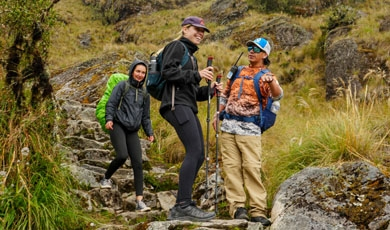 -50% OFF
-50% OFFTrek Along the Inca Trail To Machu Picchu
7 DAYS Cusco, Inca Trail, Machu PicchuTrek Along the Inca Trail Trek to Machu Picchu with Valencia Travel, a renowned Peruvian tour company offering off-the-beaten-path experiences. Click here to learn more about the Inca Trail to Machu Picchu.
$ 899Per person twin shareWAS $1798
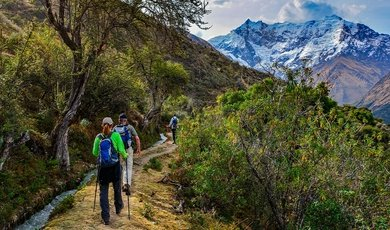 -50% OFF
-50% OFFSalkantay Trek & Machu Picchu
8 DAYS Cusco, Machu Picchu, Salcantay TrekOur 8 day Salkantay trek to Machu Picchu hiking tour surrounds you with the beauty of The Andes in Peru! Check out more details at Valencia Travel Cusco today!
$ 845Per person twin shareWAS $1690
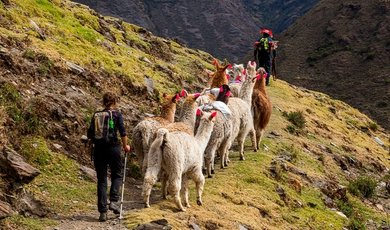 -50% OFF
-50% OFFLares Trek & Machu Picchu
7 DAYS Cusco, Lares, Machu Picchu, Sacred ValleyJoin Valencia Travel on this 7 Day Lares Trek and Machu Picchu combination tour for one of the best Peru cultural treks in Peru. Click here to book your Lares Trek today!
$ 770Per person twin shareWAS $1540
AWARDS AND RECOGNITION
At Valencia Travel, we are honored to have been recognized for our commitment to exceptional Peru vacation packages. This section celebrates the awards and accolades we've received, a testament to our dedication to excellence in service, innovation, and sustainability within the travel industry. Each award represents our passion for creating unforgettable Peru tour packages and our continuous efforts to exceed the expectations of our travelers. From prestigious industry accolades to customer service excellence awards, these recognitions motivate us to maintain the high standards we've set for ourselves and for your holiday adventures. We invite you to explore our achievements and join us as we continue to strive for excellence, making every tour trip with Valencia Travel an award-winning experience.


Valencia Travel is proud to display our certifications, a testament to our commitment to quality, safety, and sustainability in Peru travel. These recognitions showcase our dedication to the highest standards in each Peru adventure package we offer. Our certifications affirm our promise to provide outstanding sustainable and responsible Peru travel experiences. Discover the standards we uphold and feel secure in choosing Valencia Travel, where excellence is not just a goal, but a certified reality.

